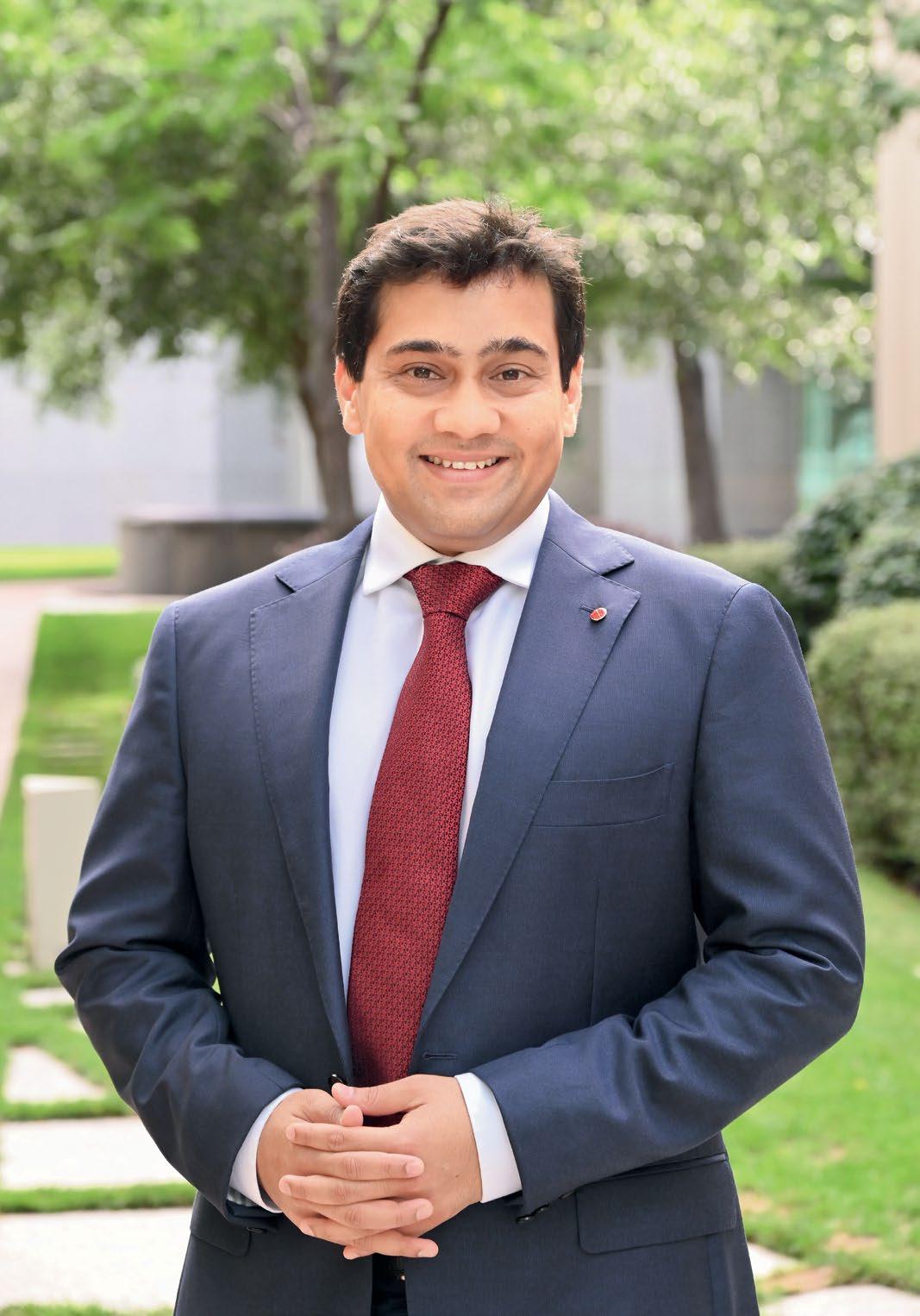

SYDNEY APRIL 2024 Vol. 31 No. 7 FREE All things Indian. In Australia. indianlink.com.au JULY 2023 1 Level 24/44 Market St, Sydney 2000 • GPO Box 108, Sydney 2001 • Ph: +61 2 9279 2004 Celebrating 29 years and 27 Multicultural Media Awards
Ghosh
Varun
The newest Senator in Parliament

2 APRIL 2024 www.indianlink.com.au

APRIL 2024 3

4 APRIL 2024 www.indianlink.com.au
PUBLISHER
Pawan Luthra
EDITOR
Rajni Anand Luthra
CONTRIBUTORS
Torsha Sen, Vivek Asri, Renesh Krishnan, Khushee Gupta, Bedashree Gogoi, Khushaal Vyas, Matana Pachuau, Sydney Srinivas, Tarini Puri, Darshak Mehta, Ritam Mitra, Rishiv Rathore, Mamta Sharma, Thevakie Karunagaran, Dhanya Samuel, Sandip Hor, Neeru Saluja, Minal Khona, Auntyji
SALES AND MARKETING
Charu Vij
ADMN
Aanchal Matta
INDIAN LINK MEDIA GROUP
Level 24/44 Market St, Sydney 2000
GPO Box 108, Sydney 2001
Ph: 02 9279-2004
Email: info@indianlink.com.au
What’sApp-ened to the middle ground?
 TBY PAWAN LUTHRA
TBY PAWAN LUTHRA
he most widely used social media platform in India is not X, or Instagram, but WhatsApp.
In 2024, the number of WhatsApp users in the country touched 535.8 million.
That’s about a third of the entire population, and growing at a rate of 16.6% pa. Add in the 32 million Indian diaspora, and this platform now becomes a powerful tool in the hands of the political parties.
No doubt WhatsApp has its uses, but the potential to create confusion – and discord – is huge.
The General Election in India will stretch across seven weeks from 19 April to 1 June, with results to be announced on 4 June.
With 543 seats in play, opinion polls are heavily in favour of the ruling Bhartiya Janata Party (BJP) which won the last election with 303 seats. It is now looking to further consolidate their hold over Parliament.
About A$140 million was spent in
advertising across all platforms by the two major parties in the 2019 election, as per Election Commission reports.
But while traditional media – print, radio and TV will have the usual spend with messaging, political analysts say that this election will be fought on social media platforms and those with the best ability to get their messaging out will benefit the best.
Facebook and Instagram have their limitations in this regard (the former with its restrictions on political advertisements and strict monitoring, and the latter with its restricted use across certain age groups). Tik Tok remains banned in India.
Social media influencers such as Ranveer Allahbadia and Kamiya Jani, with their millions of followers, have now found themselves inducted in the campaign. Leaders like Rahul Gandhi, Smriti Irani, Dr Jaishankar have set time aside for these new media darlings.
The ease of use on WhatsApp – and little or no censoring – has seen it become a preferred platform for political parties.
The BJP fired the first salvo by sending a personalised ‘Letter from the Prime Minister’ on WhatsApp — highlighting the achievements of the Narendra Modi government and seeking
feedback from voters.
On the other hand, the Congress runs a Rahul Gandhi WhatsApp group in which the leader is said to interact with people and respond to their queries.
Yet, WhatsApp has been highly successful in amplifying not only the message but also the misinformation.
Most people of Indian origin are members of multiple WhatsApp groups – the school group, the university group, the local suburb, the professional, the faith-based, the language-based, the hobby-based, immediate family, extended family, the larger extended family (!)and to be sure, political messaging has ramped up over the last few weeks.
It is not uncommon to wake up to a barrage of say 200 WhatsApp messagesmost being some pretty serious argy-bargy about some political flashpoint or other in India.
The greater the logic in refuting a message, the angrier the response.
No one’s really listening, because no one really changes their mind after all that discussion.
The middle ground between respectful debate and angry diatribe has all but vanished.
Judicious use of the mute button, or mindful distance – you decide.

APRIL 2024 5
EDITORIAL All things Indian. In Australia.
Indian Link is a monthly newspaper published in English. No material, including advertisements designed by Indian Link, may be reproduced in part or in whole without the written consent of the editor. Opinions carried in Indian Link are those of the writers and not necessarily endorsed by Indian Link. All correspondence should be addressed to:


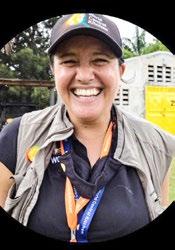



6 APRIL 2024 www.indianlink.com.au SPECIAL FEATURES 12 INDIA VOTES Elections at a glance 17 GAZA A fellow Mizo’s prayer for Zomi Frankcom 20 CRICKET Neil D’Costa: Cricket coach extraordinaire 24 FAMILY Dads of Meenakshi 37 SCREEN Dev Patel chats with Neeru Saluja THE NEWEST SENATOR IN AUSTRALIA Khushaal Vyas in conversation with Varun Ghosh COVER STORY CONTENTS 32 12 20 17 10

APRIL 2024 7
YOUR SAY

PEDALLER CHARVI TANKSALE
TARINI PURI spoke with Melbourne teenager Charvi Tanksale who made a mark at the recent AusCycling Junior Track National Championships.
Carnegie Caulfield Cycling Club wrote: Great write up of our Junior Club Captain. So proud of her approach and efforts.
Charvi Cyclist wrote: Thank you Indian Link for your support!
Rajesh Krishnan wrote: Go go go, Charvi, we are all behind you as you chase.
Mari Robert wrote: Well done Charvi.
Akshat Tanksale wrote: Growing up in India, both my wife and I were brought up in a culture where education was paramount (and for good reason). We now have Charvi, the first sports person in our family (from both sides) to make a mark at State or National level. Gives us a lot of pleasure (and many other emotions)!
Cordelia Selomulya wrote: That’s amazing! No wonder sometimes you were on the cycling track for IChemE meetings. Well done mum and dad, as it takes a village.
Saeid Baroutian wrote: What wonderful news, Akshat! Congratulations to your daughter, Charvi on her remarkable achievement. It brings back the delightful time when you and your family came to visit my lab during the CHEMECA 23 conference.
John Westover wrote: Aussie Aussie Aussie, Oi Oi Oi!!!
Liz Hallifax wrote: Amazing achievement, not easy to strive at national level. To keep up the balance is a challenge and rewarding.
Rajiv Tyagi wrote: Congratulations Akshat and Sonika. You guys have done a great job. Charvi has made all of us proud. I am excited and looking forward to more such successes /milestones in her career.
Poovarasi Balan wrote: Real pleasure to read this, Akshat. Congratulations to your family. With lots of encouragement from Malaysia.
Chetan Shukla, Saman Ilankoon, Divyang Sharma, Mohan, Rohit Tiwari, Kalpit Shah, Ami Patel, Vibhooti Verma, Nidhi Singh, Colleen Johnson, Pramode Narayanan, Jiten Vij, Saurab Tosniwaal, Vishal Mehta and Nick Birbilis also wrote in notes of congratulations.
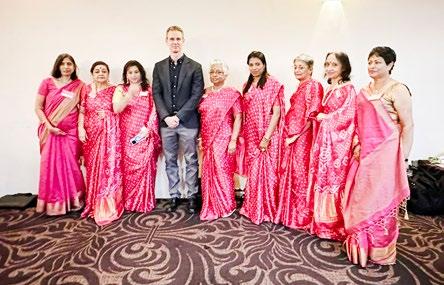
PINK SARI INC’S NEW CANCER INFO AND CARE PROGRAM
RAJNI ANAND LUTHRA on the CanInfo and Care project which provides culturally sensitive information to those from the South Asian community recently diagnosed with cancer.
Shantha Viswanathan wrote: You capture all the salient points about Pink Sari Inc’s latest project CanInfo and Care. We value your support in getting our message across to the Indian diaspora.
Dreaming Leo wrote: A truly informative and useful launch! hope all those who need it approach the team and take full advantage of this project.
Sheetal Challam wrote: Cancer Institute NSW all the way behind Pink Sari Inc. Thank you for this article.
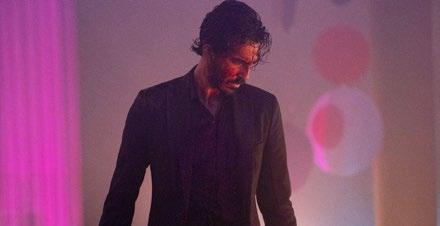
DEV PATEL ON ‘MONKEY MAN’
NEERU SALUJA spoke to first-time director and actor Dev Patel, on the eve of the release of his film Monkey Man.
Radishka_art wrote: Absolutely hanging to see this! Dev Patel is incredible.
Maya Menon wrote: Awesome actor, lovely interviewer.
Ana Tiwary wrote: Great interview - thank you!
Anmol Malhotra wrote: Great to see him come a long way since Slumdog
Millionaire days.
Ritu Gupta wrote: What an interesting take on the character of Hanumanji.
Jigmee Dorjee wrote: Brilliant actor.
Rajni Luthra wrote: A wonderful interview Neeru Saluja - well done!
Jyotsna Jyoti wrote: Dev Patel is just incredible. Trailer looks amazing, can’t wait to see the film. Thanks Neeru for the interview.
kiranghopal9990 wrote: Why is Dev trying to talk in an Indian accent…? But anyways, I'm a huge fan of him, and all the best for Monkey Man.

UBER INVALIDATES, THEN REINSTATES, THE NAME SWASTIKA
RAJNI ANAND LUTHRA on how Uber learned there’s nothing offensive about Indian woman Swastika Chandra’s first name.
Sriraman Annaswamy wrote: Incredible how the actions of a few misinformed imbeciles can distort the entire meaning of a PROFOUND word (and symbol) and almost result in a complete ban being imposed on it! Would be interesting to see if they've had similar problems with Jihad as in Jihad Dib?
Ankesh Gupta wrote in response: A few misinformed imbeciles is perhaps downplaying the "profound" negative impact that the symbol had on civilization. Yes, re-education and a better understanding of Swastika and what it represents is 100% needed and I agree. But I wouldn't quite phrase one of the most horrifying instances in human history so flippantly. Agree with your message just not the messaging.
‘WRITING IS BOTH TORMENTING AND ENJOYABLE’
SHARON RUNDLE reported on Roanna Gonsalves’ chat on stage at UNSW with Tamil writer Perumal Murugan.
Roanna Gonsalves wrote: Dr Sharon Rundle, thank you so much for covering and writing about our event with Perumal Murugan, such an important writer. Much appreciated.
Sharon Rundle wrote: A fascinating insight.
Javaid Naikoo wrote: Amazing work, Sharon.
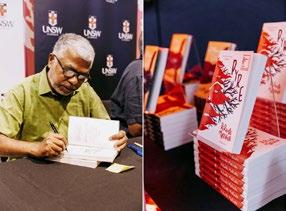
8 APRIL 2024 www.indianlink.com.au
POSTIE ONE DAY, BBL CRICKETER THE NEXT
RENESH KRISHNAN spoke with Nikhil Chaudhary of the Hobart Hurricanes, only the second Indian-born player to ever play in the Big Bash

Rajesh Krishnan wrote: Hats off to the young cricketer. What an inspiring story, Renesh Krishnan.
Mukul Gupta wrote: Wow. How did I miss this? Such a great interview, Renesh Krishnan. (Much better on camera than your dad for sure!)
Mittu Gopalan wrote: A good interview by Renesh. Nice to see Indian Link giving our young ones some amazing opportunities.
Prema Krishnan wrote: Well done Renesh Krishnan, and let this be just the beginning for your dream to come true.
Rajni Luthra wrote: One aspect of my work that I am very proud of, is providing a platform for emerging journalists from our community. Cutting their teeth at a small independent media house like ours, many of them have moved on to bigger pastures - SMH, News Corp, The New York Times, The Canberra Times, Momentum Media, SBS, The Daily Mail Aust. Often they do so with a Young Journalist Award, obtained as an Indian Linker. (There are five such awards in our kitty, and at least twice as many finalists.) This month has been memorable for Renesh Krishnan, our newest and youngest team member – not only because he turned 20 (making me feel, um, somewhat ancient), but also because he pocketed two bylines, one of which was this video interview, his first ever. Being a sports enthusiast, both pieces of work come from that beat. Give this video a watch, and join me in encouraging a budding journo.
Tracey Holmes wrote: So fantastic! Congrats Renesh Krishnan. You have wonderful mentors in Rajni Luthra and Pawan Luthra. And after that interview, they are lucky to have you there.
Natasha Jha Bhaskar wrote: This reminds me of my first for the Indian Link Media Group in 2018 a few months after I arrived in Australia as a new migrant. Jayaraman Guruswamy wrote: I closely follow your works. It is simply great coaching of the young ones.
Virat Nehru wrote: Proud of the work you've been doing for so long, and especially your eye for spotlighting young talent.
Amar Singh JP wrote: Achieving new heights, well done.
WHERE IN INDIA
Where is the first and oldest church built in India, established 52 AD, by one of the twelve apostles of Jesus Christ?

Readers





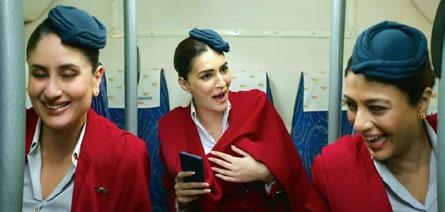
WRONG ANSWERS ONLY
We asked, what are Kareena, Tabu and Kriti laughing about?
Anmol Malhotra wins a free movie ticket for his response: They are laughing at Diljit Dosanjh’s Instagram videos.
Anindita Roy Chowdhury wrote: They’re laughing at how they now get paid more than male actors.
Anu Singh wrote: They're laughing at the public who still go to watch their movies even though Kareena said,“Don't watch our movies”.
Harpal Narula wrote: They looked at each other and realised how funny they look in those silly outfits.
Arix Bishnoi wrote: They’re saying, can’t believe our movie is relying on B grade dialogues and ‘90s item numbers; because apne movie ki story c***hai, just like airline food.
Meddy Prash wrote: Yay, we got paid for our dumb acting in this c*** movie.
Ritu Gupta wrote: Something Kapil Sharma said to them while filming?
Aruna Didugu wrote: Rejoicing, they can take the world in their stride…Go girls.
cactuslessons wrote: The Gather Round - wondering which ball to play?
rajinder1967wrote: They’re laughing at how their movie made Rs 100 crore.
SHARMA’S KITCHEN TAKES DAIRY AWARD
VIVEK ASRI spoke to Akaash Sharma of Sharma’s Kitchen following their win at the Australian Grand Dairy Awards for their Milk Badam.
Neelu Ashika, Joginder Lamba, Manmeet Malhi, Vickyy Paul, Nitin Setia, Sandeep Moharekar, Shikha Lal, Shibani Mishra, Ranbeer Kumar, Ruby Nagpal, Anil Beri, Vijay Kumar and Sirjan Jung Kshetri wrote in notes of appreciation.


WHERE IN OZ
This beautiful mosque is built in Ottoman style characterised by the use of pointed arches, external materials and colours. Where in Oz?

Readers

APRIL 2024 9
Siraj Jamdar, Tejas Vaidya, Sanghamitra Mitra, Leyla Da Silva, Deepak Vincent, Nazish Fatima and Imran Parmar got it right: Gallipoli Mosque in Auburn, NSW.
Bimal Prasad Chaudhry, Deepak Vincent, Kshitija S, Chandra Kishore and Annie Lionnet got it right: St. Thomas Church, Thrissur, Kerala.
the best
Indian Link straight in your inbox. Scan the QR code to
up to our weekly enewsletter
Get
of
sign
Senator Varun Ghosh, thank you so much for chatting to Indian Link today.
Thank you for having me.
Senator, yours has been a remarkable career trajectory. Can you tell us a bit about how you've landed in the position that you are in, a Senator for WA?
Well, thank you. I've been very fortunate in a number of the opportunities that I've had, both in terms of education and career opportunities, but it really starts earlier than that, and that's from my parents. I was raised with my younger brother in a very loving and secure family home. Education was always seen as being very important, and we had wonderful educational opportunities at school and university.
I was very interested at school in political and legal studies and history, and I think both of those things led me down the road of wanting to study law at the University of Western Australia. I also studied political science and international relations, which again those interests continued to develop.
And then when I finished law school I joined a law firm called Mallesons Stephen Jaques (it's now called King & Wood Mallesons), which gave me excellent fundamental legal training and technical training, and I also met some wonderful friends and mentors along the way.
That professional journey led me to want to study overseas and I was lucky enough to win a scholarship to do my Masters in at the University of Cambridge.
That was a wonderful year where I got to immerse myself in a series of topics perhaps not day-to-day topics in the commercial legal world, like legal philosophy and jurisprudence, but also got to play a lot of cricket and hockey, make some wonderful friends, and see a large part of England.
Were your English teammates better than your Australian teammates? No of course not, and how could I say otherwise!
Good answer.
I played cricket and hockey, so Australia I think still has the wood on England in both those sports!
I was also interested in working overseas. An opportunity came up to work in financial law in New York in 2011, for a firm called White &Case, and that was a fascinating experience. We were sort of in the shadows of the global financial crisis then, and working in a transactional team was both incredibly rigorous - the lawyers in New York worked very long hours - but it was also a fascinating and really stimulating opportunity. New York is a wonderful city and there’s lots to do as a young man there. I then did a stint at the World Bank which was driven largely because I was interested in public policy and
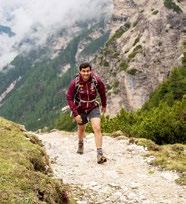

international policy. That was in Washington D.C but it was always my plan to come back to Australia and not least of which because I love the country, but my family was also here, so I missed them a lot.
Coming back to Australia in 2014, I rejoined legal practice, and then a few years later became a barrister chambers at Francis Burt Chambers in Perth.
Running alongside that for a long time was my involvement in the Labor Party. I joined the Labor Party when I was 17, basically just before I started University. I joined it because I believed very strongly in the transformative power of education.
And I thought that as a matter of fairly basic fairness, it was important that everyone in society had access to good education and good training opportunities as a way of then providing a pathway into good jobs that were well paid, were safe and where their rights were respected. That I think fairly naturally led to the Australian Labor Party. That's the intellectual reason. I think I was also fascinated by the Hawke and Keating governments and their reform agenda, the energy of their leadership and their focus on good economic policy, and also Australia being proud of itself finding its place in our region and being comfortable as an open multicultural and liberal society.
How important is your Indian heritage for you as a Senator, and how do you propose to bring that as part of how you represent the community - both the Australian Indian community and perhaps multicultural Australia more broadly? So obviously I represent Western Australians in the Commonwealth parliament. I think that background, not only in terms of my family's background and their experiences, but also the cultural identity of being an Australian of Indian origin, is essential to the perspective I bring to this job. It's certainly something that will infuse everything I do. It's part of who I
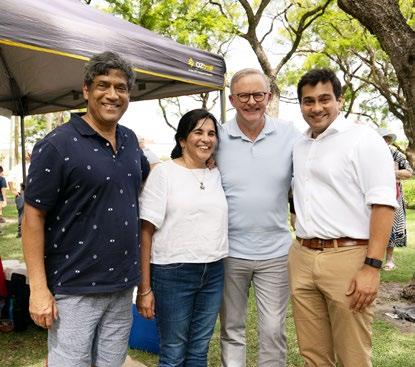
am, and that experience is very near and dear to my heart.
Senator, I'm curious, both your parents are doctors, your brother's a doctor. I don't know if you, like me, have felt like the black sheep of the family because you broke the mould and went into law. Do you think you're the star child now that you're a senator?
(Laughing) Far from it! When I was selected by the WA Parliament to replace Senator Dodson, the premier of WA Roger Cook, after going through my family’s professional background, described me as the underachiever of the family. And I think that's probably right!
Things never change! I'm glad you brought up Senator Pat Dodson. We've recently had a referendum where Australia ultimately voted No to constitutional reform and a recognition of Indigenous Australians by way of the Voice to Parliament. In your first speech you talked about Pat Dodson's influence. Do you see yourself as someone who wants to advocate more for Indigenous issues, as part, I suppose, of Pat Dodson’s legacy? What do you see your role in this, and of Australian Indians more broadly, as their role in advocating for Indigenous issues? Obviously the reason I am in the Senate now is to fill a vacancy that was created by Senator Dodson's retirement and the circumstances of that retirement obviously marked by sadness, because he was unwell for a little while beforehand.
I'm very conscious both of that context as I take this seat, and the enormous responsibility that brings.
Senator Dodson’s contribution to Australian life is immeasurable - he's been an advocate for justice for First Nations people, and also for rural and regional Australia for his whole life, and that's very much front of
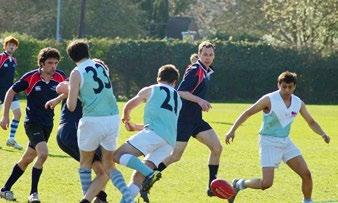
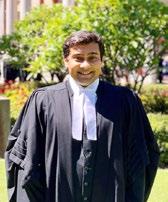
mind as I take over this job.
In relation to the referendum itself, obviously the result was a source of significant disappointment to a large number of Australians, particularly Indigenous Australians. I think the starting point is, you have to acknowledge that a majority of Australians voted against creating a Voice to Parliament and however much I was for it, ultimately we as Australians have to respect that result.
Where to from here, I think, is a renewed focus on closing the gap initiatives in education, in healthcare and in economic opportunities for Indigenous Australians. I think that the government is focused on that, and very conscious of its responsibility to address those issues and to continue to try to improve the position of Indigenous people in our community, which unfortunately in many instances remains one of disadvantage, if not severe disadvantage.
All Australians have an obligation to try to improve the lot of Indigenous Australians and obviously Australians of Indian origin form part of that broader group. I'm not sure that there are specific elements that I would say as relating to the Australian-Indian community as distinct from the Australian community more generally, but I do think it is very important that we continue to focus on and improve some of those metrics and really close the gap for Indigenous Australians.
Australian Indians - and those that are younger especially - are quite excited to see someone of your background finding themselves in a political sphere using their voice for various issues. It's something that I think all parties can agree that there's not a great deal of, out there. There could be a lot more cultural diversity across the board in Australia's Parliaments both at state and federal levels. Do you find that a lot of migrants shy away from having a political voice? How do you combat that and how

10 APRIL 2024 www.indianlink.com.au
COVER STORY
With WA Premier Roger Cook With parents Soumya Ghosh and Lakshmi Nagarajan & PM Albanese
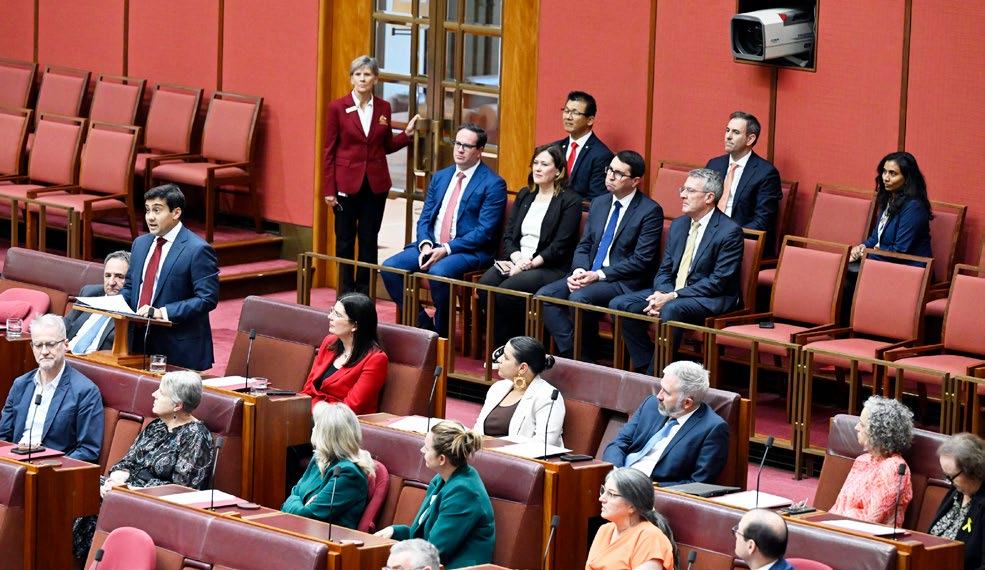
“I feel the warmth of the Indian community’s embrace quite vividly.”
 BY KHUSHAAL VYAS
BY KHUSHAAL VYAS
do you encourage people of multicultural backgrounds to get more involved in politics, or at least having their voices heard to advocate for political issues?
That's a very good question. I do think cultural diversity is important in Australia's parliaments, and I think some of that is already being rectified. You see a lot more people from different backgrounds and different experiences in politics, in journalism, in the law. Some of that is occurring naturally over time as people or groups of people are here in Australia for longer, and also as they feel more comfortable getting involved.
I think there is a sense of finding economic security first.
And then as families are in Australia for longer and longer periods, you'll see that natural broadening of interest, and probably a deepening of political engagement as well.
I understand you've had a big outpouring of support and excitement from the Indian community. You described being overwhelmed by that support. What does that support mean to you?
I can't express how heartwarming and happy it's made me feel. It's been expressed in lots of different ways, be it out at events, or people reaching out to me directly, or people talking in the media about it. It's been overwhelming. I feel very fortunate. I feel the warmth of that embrace quite vividly and I'm very grateful for it.
Varun Ghosh on how he came to be Senator for WA, and what he hopes to achieve in his new role
I think many in the Indian community may end up looking towards you in terms of the future of what the Australia-India relationship looks like. The diaspora are quite proud of what they have done to push this relationship forward. What do you think your role will be, given your background, in strengthening this relationship?
I think what you said there is spot on, which is the strength of the diaspora. In February, when I was very new in this job, there was a conference called the Indian Ocean Conference held in Perth to which both Australia's Foreign Minister Penny Wong and India’s Foreign Minister Dr. Jaishankar came, and a number of other Indian Ocean leaders. Both Minister Wong and Minister Jaishankar spoke of the role the diaspora has played in the Australia-India relationship, and their importance going forward. It's an interesting question as to what role I will play in that because obviously I'm a senator from WA and my primary constitutional responsibility is to represent the people of WA in the Commonwealth parliament.
I think what's very encouraging for me more generally though, is the breadth and depth of the commitment that people have to the Australia-India relationship in both countries, and that's reflected not only at governmental and business levels, but also at a personal level and the communities are excited.
What would you say your key visions are while in this position? What would you like to have achieved at the end of your tenure? What is your vision for WA and perhaps broader Australia as well? Well, I think it's important for me to acknowledge that I've just moved into a job that involves steep learning curves, so I'm very much trying to get up those learning curves as quickly as I can so I can be an effective advocate. Looking back, or perhaps in the future, I would hope that people would be able to say that I have made a contribution to making education more accessible to people across Australia, including in WA. I'd be very grateful if I was able to do that. The second is in relation to WA’s economy, and its place in the broader Australian nation. In my first speech I did spend some time talking about the significance of WA and the distinctness
of its outlook. If I can play any small role in keeping WA economically strong, outwardlooking and a confident, proud and vibrant state, then I'd be very happy.
We won't say anything about how the West Coast Eagles and Fremantle Dockers are doing in the AFL right now, but of course we wish all Western Australians the best for the season.
(Laughing) I’m a Dockers fan so I’m pretty happy to talk about how we’re doing!
We're so grateful you've been able to spend some time talking to us. It’s so exciting to see you in the position that you are in, and we wish you all the best for what we hope to be a fruitful and effective political career, congratulations. Thank you. Lovely to speak to you.
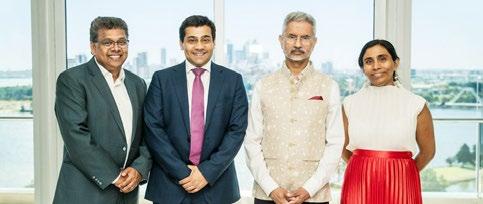
APRIL 2024 11
All ears: Senator Ghosh’s first speech in Parliament
WA Parliamentarians with Indian Foreign Minister S Jaishankar
The election at a glance
Managing the formidable logistical hurdles of India's 18th General Elections
Election starts: Fri 19 Apr 2024
Ends: Sat 1 Jun 2024
Results announced: Tue 4 June 2024
Number of lawmakers to be elected, ie, number of seats in Parliament: 543 (from 28 States and 8 Union Territories)
Of these, 412 are for general, 84 for Scheduled Caste (SC) candidates, and 47 for Scheduled Tribe (ST) candidates.
Number of constituencies: 543
Polling is staggered across 7 phases.
Phase 1 (19 April) will see voting in 102 seats
Phase 2 (26 April), 89 seats
Phase 3 (7 May), 94 seats
Phase 4 (13 May), 96 seats
Phase 5 (20 May), 49 seats
Phase 6 (25 May), 57 seats
Phase 7 (1 June), 57 seats.
Number of registered voters: 968 million (497 million males, 471 million female, 48,044 third gender)
The electoral roll has seen an addition of over 20 million new voters in the age group 18-29 – with more females than males.

As India treads on the path to becoming a significant global player, a vast population, growing economy, and strategic geopolitical position make its influence on the world stage undeniable. However, to truly emerge as a global leader, India needs to address certain challenges while capitalising its strengths effectively.
These challenges include poverty, corruption, infrastructure deficits, environmental apathy, and a tide of communal disharmony. Addressing these issues demands strong leadership, effective governance, and long-term commitment across agencies and sectors.
India's global positioning despite conflicts and crises, underscores the need for a comprehensive and sustainable approach to tackling internal issues. While quick-fix
Number of voting booths: 1.25 million (Electoral rules stipulate that there must be a polling station within 2 km of every habitation).
Number of election officials: 15 million (The Election Commission of India, which oversees the conduct of General Election every five years, usually has a staff of 400-450 personnel) Thousands of security personnel from central and state forces, as well as railway officials, will also be called upon to help.
Number of Electronic Voting Machines: 5.5 million (55 lakh) EVMs will be in use in the first phase of polling on 19 April.
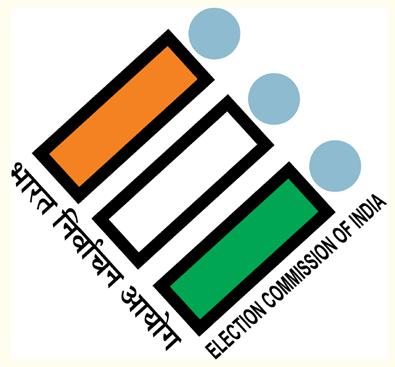
The Election Commission’s logo is inspired by the Electronic Voting Machine
secretive scheme that permitted anonymous political contributions through electoral bonds.
Estimate of spend by political parties: In excess of US $14.4 billion (Source: Centre for Media Studies, New Delhi) India's Supreme Court this year invalidated a
Can
Another innovation: The Election Commission will set up control rooms to weed out fake election content on social media.
What is absolute majority – ie how many seats need to be won to form government?
A party or coalition needs to secure a majority of at least 50%, which is 272 seats in the Lok Sabha
Number of political parties in thefray: Approximately 2400 (including national, state and ‘unrecognised’ parties). The main political parties are Bharatiya Janata Party, Congress, Communist Party, Bahujan Samaj Party, National People’s Party, Aam Aadmi Party, Trinamool Congress, Shiv Sena, Nationalist Congress Party (NCP), DMK, AIDMK, Biju Janata Dal.
Prime Ministerial Candidates: Narendra Modi (BJP) and Mallikarjun Kharge (Congress)
Sources: Election Commission of India, Reuters, AFP
quick fixes work for
a multidimensional and complex nation like India?
There’s vast potential, but also intricate challenges: to navigate both will require sustained efforts in governance, education, healthcare, and justice, enroute to building a foundation for inclusive growth and global leadership.
solutions may seem appealing, the notion of a universal remedy will be facile and potentially damaging, especially for a country as diverse and dynamic as India. Governance, judiciary, health, education, law and order, and economic development are some of the critical areas that will need immediate attention and support.
Effective governance hinges on a robust bureaucratic machinery. Implementing meritbased appointments, ensuring transparency, and establishing accountability are concrete steps in the direction that help build trust in the government. A clear demarcation between the three pillars of democracy – the executive, the legislature, and the judiciary - is also crucial for maintaining the checks and balances of a functioning democracy. Ensuring separation of religion from the state will guarantee equal rights for all citizens. For economic stability, tax reforms through simplified tax structures, a wider tax base, and a whip on tax evasion will go a long way in creating a more balanced economic
environment.
A fast and effective judicial system is essential for ensuring timely justice and upholding the rule of law. Improving court infrastructure, increasing judicial efficiency, and reducing case backlogs are key areas that require immediate attention. Strengthening law enforcement agencies, ensuring swift and impartial justice, and addressing underlying socio-economic factors that contribute to crime are essential for maintaining peace and security.
India’s greatest strength lies in its demographic dividend. Investments in education, skill training, and job creation will ensure a stable and sustainable environment for its young people.
The education system in India is in urgent need of an overhaul to meet the challenges of the 21st century. Emphasising critical thinking, creativity, and innovation, besides ensuring access to quality education for all, can help build a skilled and knowledgeable workforce. The healthcare system too
requires significant reforms to make healthcare accessible and affordable to all. Investing in healthcare infrastructure, training healthcare professionals, and implementing effective healthcare policies are crucial steps in this direction.
Last but not the least, reducing media influence and bias in news reporting is paramount to promoting unbiased and informed public discourse. Ensuring that journalism remains focused on facts and analysis rather than sensationalism will go a long way in restoring credibility to the media.
Though India's journey towards global leadership is fraught with challenges, addressing these challenges and leveraging its strengths effectively, can make it a shining example of progress and prosperity on the world stage. It is imperative for all stakeholders - government, private sector, civil society, and citizens - to work together towards a common goal of building an inclusive India for generations to come.
Pawan Luthra
12 APRIL 2024 www.indianlink.com.au INDIA VOTES

2024 LOK SABHA ELECTIONS
Predictions and predilections define a critical turning point
On the significance and implications of India's upcoming general elections, and the potential impact on policy direction, economic reforms, social dynamics, and global partnerships.
 IBY PAWAN LUTHRA
IBY PAWAN LUTHRA
ndia stands at the threshold of a crucial moment as it gears up for the 2024 general elections. While Prime Minister Narendra Modi seeks yet another term, analysts predict a strong showing by his party, with projections suggesting up to 335 seats, surpassing the 2019 tally of 303 seats. The 2024 Lok Sabha elections are likely to be a landmark event as they will shape the country's policy direction for many years to come, besides determining the composition of the 18th Lok Sabha.
Politically, the Bharatiya Janata Party (BJP) has continued to consolidate its power, winning key state elections and expanding its stronghold across the country. The other political parties meanwhile struggle to find a comprehensive strategy to counter its dominance, leading to a
fragmented opposition. While current polls indicate reestablishment of Modi's popularity, the opposition has shown signs of unity, by forming a coalition. However, the lack of a strong leader and clear agenda could hamper their efforts.
The outcome of the 2024 Lok Sabha elections will significantly impact India's growth. A stable government with a clear mandate is crucial for implementing economic reforms, policies, and initiatives that will set the tone for India's economic development in 2024 and beyond.
The implications of the upcoming elections extend farther than just the formation of the next government as they have the potential to reshape India's secular fabric and inter-religious relations. India stands at a juncture where a government upholding the principles of secularism and fostering religious harmony is likely to strengthen the country's social fabric, given its democratic and secular nature.
The upcoming elections are of immense importance to India's minority communities,
who are closely monitoring the outcome that could significantly impact their rights and status in the country. A government that upholds and safeguards minority rights will be crucial for their well-being and preserving India's diversity and inclusivity. The BJP has been a longtime proponent of a Uniform Civil Code (UCC), which aims to promote national integration by replacing existing personal laws based on religious practices with a uniform set of laws for all citizens. While implementing the "one country, one law" policy would face challenges due to India's diverse religious and cultural landscape, critics argue that it could also be used to assert Hindu majoritarianism.
Infrastructure development and cohesive trade dynamics will influence India’s ability to forge new economic partnerships and adapt to evolving global trends. India's digital transformation is also set to play a significant role through government's initiatives like Digital India to accelerate efficiency, innovation, and inclusivity in the economy.
Despite an optimistic outlook, India faces several challenges like inflation, rising fiscal deficits, agrarian crises, and geopolitical uncertainty. Addressing these challenges will require concerted efforts from the government and stakeholders across sectors. On the economic front, investors are eyeing the elections for signals on the government's economic policies and reforms. A government that continues to focus on economic growth, infrastructure development, and foreign investment is likely to receive positive attention from investors. Continued economic reforms are expected to be the cornerstone while the government's focus on improving the ease of doing business, attracting foreign investors, and stimulating key sectors of manufacturing, infrastructure, and agriculture will be crucial for sustaining growth momentum.
In 2024, India is expected to be increasingly aligned with sustainable development goals. The government's focus on renewable energy, environmental conservation, and inclusive growth will be the key drivers of India's growth narrative.
Overall, the period following the 2024 Lok Sabha elections in India has the potential to be a time of economic growth and development.
However, much will depend on the policies and initiatives of the new government, as well as external factors such as global economic conditions and geopolitical stability.
If the new government is able to provide stability, continuity, and a conducive business environment, India could see significant economic growth in the coming years. The outcome of the upcoming elections will set the stage for India's future trajectory, shape its policies and priorities, and position it as a global economic powerhouse driving growth and prosperity for its citizens and the region.
APRIL 2024 13
Photos: AP
Updates in migration regulations
NSW eases requirements for Skilled Work Regional 491 Visa
The NSW Government has made significant adjustments to the nomination criteria for the Skilled Work Regional visa (subclass 491) under Pathway 1, effective immediately. The move aims to enhance accessibility for skilled workers residing and working in regional NSW, thereby bolstering regional development and the local economy.
Previously, applicants for Pathway 1 were mandated to have lived and worked in a designated regional area of NSW for at least 12 months with a single regional NSW-based employer, among other prerequisites. However, based on industry feedback gathered during recent Regional Skilled Migration seminars, the NSW government has decided to amend this criterion, reducing the employment duration requirement to 6 months.
Key changes in nomination criteria for Pathway 1
Reduced Employment Duration:
Applicants must currently reside and work in a designated regional area of NSW, continuously doing so for the past 6 months, down from the previous 12 months.
This alteration aims to broaden eligibility for the Skilled Work Regional visa (subclass 491) under Pathway 1, creating avenues for skilled workers who have contributed to the regional economy and communities for a duration of six months.
Remaining criteria:
Employment must be with a single regional NSW-based employer operating from established business premises in regional NSW.
The role must align with the applicant’s nominated (or closely related) occupation. The occupation must be classified as skilled by NSW.
Applicants must receive a minimum salary of $70,000 (prorated if under 38 hours per week) from their qualifying employer in the nominated (or closely related) occupation in the 6 months immediately before applying.
Skilled employment must commence after NSW deems the applicant skilled in their occupation and must be reflected in their SkillSelect Expression of Interest (EOI).
Applicants must submit their visa application onshore and must not have a current visa application being processed by Home Affairs for a permanent visa.
Your IELTS score: Changes announced for Student and Graduate Visas In a move aimed at bolstering the quality of education and safeguarding against potential exploitation in the workforce, the Albanese Government has implemented significant changes to English language requirements for student and graduate visas. These alterations stem from key commitments outlined in the Migration Strategy, alongside recommendations stemming from the Migration Review.
The crux of the changes revolves around elevating English language standards.
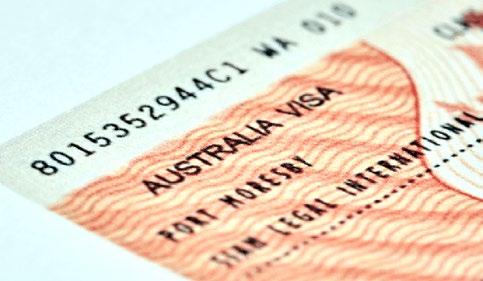
According to findings from the Migration Review, existing English language requirements for student visas may not adequately prepare students for success. Consequently, the minimum English language requirement for student visas (Subclass 500) will escalate from IELTS score 5.5 to 6.0, and for graduate visas (Subclass 485), from IELTS score 6.0 to 6.5.
Effective March 23, 2024, applicants will be subject to revised English proficiency criteria. The validity window for English language test results will also shrink from three years to one year for Temporary Graduate visas.
Moreover, the Government will wield its powers under Section 97 of the Education Services for Overseas Students (ESOS) Act to suspend high-risk education providers from recruiting international students. Dubbed as “ghost colleges” and “visa factories,” these entities will face stern warnings, with a six-month window to rectify issues or risk suspension.
To further fortify the integrity of student visas, a new Genuine Student Test will be introduced, assessing students’ study intentions and economic circumstances. This initiative aims to deter individuals seeking to exploit the system by primarily seeking work opportunities.
In tandem, visitor visas will see an uptick in “no further stay” conditions to curb attempts to sidestep offshore student visa checks.
Minister for Home Affairs and Cyber Security Clare O’Neil said, “Since September, the Government’s actions have led to substantial declines in migration levels, with recent international student visa grants down by 35% on the previous year. The actions this weekend will continue to drive migration levels down while delivering on our commitments in the Migration Strategy to fix the broken system we inherited.”
For the Cambridge English Advanced (CAE), an overall band score of at least 176 and a score of at least 162 for each test component are necessary.
Applicants taking the International English Language Testing System (IELTS) must achieve an overall band score of at
least 6.5 and a score of at least 5.5 for each test component. The Occupational English Test (OET) requires a score of at least B for each test component.
For the Pearson Test of English (PTE), applicants need an overall band score of at least 57, along with specific scores for listening, reading, speaking, and writing components.
Similarly, applicants taking the Test of English as a Foreign Language (TOEFL) iBT must achieve a total overall score of at least 83, with specific scores required for listening, reading, speaking, and writing components.
Melbourne-based migration expert Chaman Preet says the announcements previously made in regards to student visa and TR are being implemented from 23 march 2024.
“The most significant for both is in regards to English score changes for both the visas,” Ms Preet told Indian Link. “The applicants must pay specific attention to the English validity changes. These changes will significantly impact the applicants. It’s best to get expert advice and tread with caution.” ***
New ‘Workplace Justice Visa’ for temporary migrants
The Minister for Immigration, Citizenship and Multicultural Affairs Andrew Giles has announced a new visa stream for temporary migrants who are the victims of workplace exploitation.
In a significant move aimed at empowering vulnerable migrant workers and addressing workplace exploitation in the Australian labour market, the Federal Government has announced the development of two pioneering pilot programs set to commence on 1 July.
The first of the two pilot programs focuses on introducing formal protections against visa cancellation, reassuring migrant workers that they can report wrongdoing and seek redress without fear of reprisal, even if they have breached work-based visa conditions. This workplace justice visa aims to instil confidence among vulnerable workers, encouraging early reporting and the resolution of workplace issues.
“Informed by a rigorous co-design process, the pilot programs will focus on
introducing a formal protection against visa cancellation – to give people the confidence they can report wrongdoing and seek redress, even if they have breached a work-based visa condition,” Mr Giles said at an event at the Law Council of Australia Conference in Melbourne recently.
The second pilot program, the workplace justice visa, is designed to provide temporary migrants with a unique avenue to remain in Australia while they pursue justice for workplace violations. This innovative concept aims to address the plight of individuals who find themselves trapped in exploitative employment situations, offering them a pathway to seek redress without jeopardising their immigration status.
“The pilots (including workplace justice visa) will commence on 1 July this year. New regulations will be tabled in Parliament to take effect, demonstrating to workers who have been exploited that these are not simply discretionary policies of the Government but the law of Australia,” said Mr Giles.
Mr. Giles underscored the significance of these initiatives in addressing exploitation and vulnerability within the visa system. He emphasised that the pilots represent a pivotal step towards fostering a fairer and more equitable environment for all workers in Australia.
The new workplace visa will “demonstrate to these workers who have been exploited that these breaches will not be held against them, promoting the voices of those who are mistreated.”
Mr. Giles highlighted the severity of the issue, acknowledging the widespread understanding within the community regarding the detrimental effects of exploitation on the visa system. “It cannot be overstated how allowing exploitation to thrive eats away at a visa system,” he emphasised.
Reflecting on the harrowing tales of exploitation, the Minister recounted instances where individuals were too intimidated to speak out, endured passport confiscation, and suffered physical and sexual abuse at workplace. He stressed the far-reaching implications of exploitation, asserting, “When those who are vulnerable have their wages stolen from them or worse, it hurts all of us.”
Central to the Government’s strategy is the implementation of new compliance measures aimed at disrupting business models reliant on exploitative practices. Mr. Giles highlighted the introduction of prohibition measures targeting employers engaged in serious or repeated non-compliance, effectively preventing them from hiring new workers with temporary visas.
From July, employers who are barred from sponsoring new workers will also be liable to become prohibited employers – targeting the business model used by some to undermine wages and conditions across Australia. They will not be allowed to hire new staff if those workers hold a temporary visa.
Vivek Asri
14 APRIL 2024 www.indianlink.com.au VISA
***


The Hon Chris Minns MP
Member for Kogarah Premier of New South Wales

The Hon Penny Sharpe MLC
Member of the Legislative Council Minister for Climate Change, Minister for Energy, Minister for the Environment, Minister for Heritage

Julia Finn MP Member for Granville Parliamentary Secretary to the Premier Parliamentary Secretary for the Arts

Jason Li MP Member for Strathfield Assistant Speaker


The Hon Prue Car MP
Member for Londonderry
Deputy Premier, Minister for Education and Early Learning, Minister for Western Sydney

The Hon Jo Haylen MP
Member for Summer Hill Minister for Transport

The Hon Daniel Mookhey MLC
Member of Legislative Council Treasurer Authorised

The Hon Steve Kamper MP
Member for Rockdale

The Hon Sophie Cotsis MP
Member for Canterbury Minister for Industrial Relations Minister for Work Health and Safety

Dr Hugh McDermott MP
Member for Prospect Parliamentary Secretary to the Attorney General

Nathan Hagarty MP Member for Leppington Government Whip
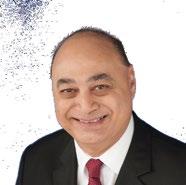

Donna Davis MP
Member for Parramatta Temporary Speaker


Minister for Small Business, Minister for Lands and Property, Minister for Multiculturalism, Minister for Sport


The Hon Jihad Dib MP











Member for Bankstown Minister for Customer Service and Digital Government, Minister for Emergency Services, Minister for Youth Justice

Stephen Bali MP
Member for Blacktown Parliamentary Secretary for Planning and Public Spaces
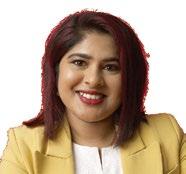

















Warren Kirby MP
Member for Riverstone
APRIL 2024 15
Edmond Atalla MP Member for Mount Druitt Parliamentary Secretary for Police and Counter-terrorism
Charishma Kaliyanda MP Member for Liverpool
by Chris Minns MP, Prue Car MP, Daniel Mookhey MLC, Steve Kamper MP, Penny Sharpe MLC, Jo Haylen MP, Sophie Cotsis MP, Jihad Dib MP, Julia Finn MP, Hugh McDermott MP, Edmond Atalla MP, Stephen Bali MP, Jason Li MP, Nathan Hagarty MP, Donna Davis MP, Charishma Kaliyanda MP and Warren Kirby MP. Funded using Parliamentary Entitlements. Happy Vaisakhi May your Vaisakhi be filled with joy, peace and prosperity

16 APRIL 2024 www.indianlink.com.au
A fellow Mizo’s prayer for Zomi
Zomi Frankcom, the aid worker who died in Gaza, was born and brought up in Australia, but had Indian heritage from Mizoram
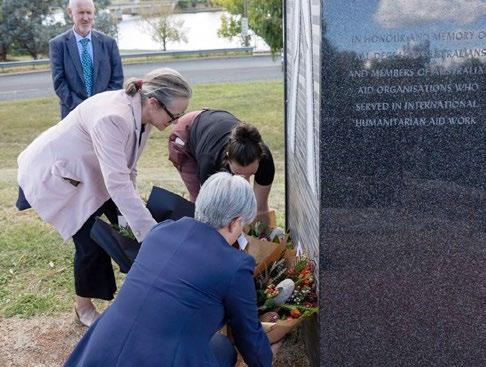
 WBY MATANA PACHUAU
WBY MATANA PACHUAU
e have all been shocked by the tragic death of the Australian aid worker Zomi Frankcom and her colleagues in Gaza.
They were killed in an Israeli air strike as they went about their work with the World Central Kitchen (WCK) charity.
Zomi, short for Lalzawmi, breathed her last doing what she was most passionate about – serving people.
Zomi's late mother Rini happened to be someone from my home state in India’s northeast, Mizoram.
She married Paul, an Australian man, who now lives in Shillong in Meghalaya, India.
(Interestingly, Zomi’s brother was in the same class at school as my wife’s sister.)
Zomi's mum Rini was probably one of the few Mizos who moved to Australia when there was really no one from Mizoram, here. I don't know the Frankcoms
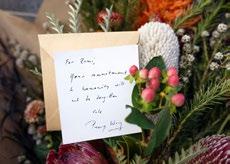
personally, but some of my Mizo friends here in Australia know them well.
From news articles extensively written about Zomi, it appears that when her mum Rini died of breast cancer years ago, it instilled in her, as a young lady, greater perseverance in life. She was by all accounts a humanitarian at heart, getting herself deeply involved in crisis response all over the world.
The Australian government is rightly responding to the situation in a prompt and measured way. But when it comes to any war or military conflict, we know how foggy it can get. We can only hope that Zomi would be given the honourable goodbye she deserves for her dedication and bravery.

sacrifices of Australia’s humanitarian workers. Zomi will not be forgotten.”

Foreign Minister Penny Wong wrote on X after a personal tribute, “This afternoon I joined representatives from Australian NGOs to lay flowers for Zomi Frankcom at the monument to commemorate the
She also said in a statement, “The Israeli Defence Force made public details of its investigation into the strikes which killed 7 humanitarian workers in Gaza, including Zomi Frankcom. The Australian Government has made clear our expectations. We expect full accountability, for her death and for the passing of her World Central Kitchen colleagues who also perished with her. We believe these deaths are utterly inexcusable. Clear practical action is needed to ensure this tragedy is never repeated.” Israel has now confirmed that two individuals involved in this incident have been stood down, but Ms Wong noted that “Israel's initial responses suggest that the gravity of the death of seven humanitarian workers is yet to be appreciated by the Israeli Government.”
The Australian Government has now
appointed Air Chief Marshal Mark Binskin (Rtd) as Special Adviser on Israel’s response to the Israel Defense Forces strikes which killed Zomi Frankcom, and six of her World Central Kitchen colleagues.
When we heard the news about Zomi from Australian news outlets, as well as from Mizoram, we took the time to say a prayer for her family that God would comfort them in their shock and grief. We also reminded our children and ourselves of the brevity of life, and how we don't know when the end will come. We reminded our children how much we need to commit our life to the One who can keep us.
We read Psalm 90, where the Psalmist writes about how fragile our life is, especially in the light of God's holy wrath. Our prayer, along with the Psalmist, was: "So teach us to number our days, That we may gain a heart of wisdom." (Psalm 90:12)
For Zomi, the Bible verse Hebrew 9:27 came when she was killed in the rocket attack that fateful day. We know that ours can also come any day.
This is an edited version of the thoughts Matana Pachuau shared with his fellow parishioners at Trinity Christian Church, Padstow NSW.



APRIL 2024 17 GAZA
FOR SALE By expression of interest TWO GIPPSLAND (Victoria) SUBDIVISIONS Enquire to exclusive agent: Call Mary on 0418 323 420 30 Lot to 56 lot
Foreign Minister Penny Wong pays a tribute to Zomi
(Source: X)
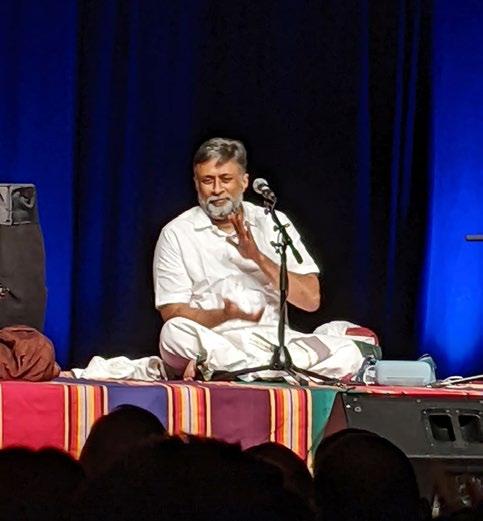
Sanjay Subrahmanyan, the Irresistible
The maestro in his element
From the moment Sanjay Subrahmanyan took to the stage – dressed in all white – he had the audience spellbound.
This, despite the fact that they knew the program beforehand.
The maestro of Carnatic music likes these days to announce in advance the details of his recital including the raga and tala. It was the same at his Sydney performance at The Concourse Concert Hall in Chatswood on 16 March.
Organised by the Shakti Classical Music Festival, which intends to promote the pursuit of classical music excellence in Australia, it turned out to be a concert worthy of remembering: there were no speeches (except for a brief introduction and vote of thanks). Nothing but music came from the dais. It was a pleasure to listen to our Carnatic music, from our favourite star, in this venue with excellent sound system and acoustics.
Accompanied by S Varadarajan on violin and Neyveli Venkatesh on Mridangam, Sanjay Subrahmanyan rendered a concert that was planned to the very last detail, and wonderfully executed. There was little gap between the items. To top it all, the three artists behaved like one, in that the accompanists were fully aware of the nuances and idiosyncrasies of Sanjay. It was remarkable and often thrilling to watch Varadarajan promptly reproduce on the violin Sanjay’s vocal notes.
Sanjay started with Bhavanutha, a popular item in Mohana Raga, the notes coming out like water sprinkling from a fountain. A swaraprasthara was included as well. Then came Kalai Magale in Raga Saraswathi, an expressive prayer. Sakala Bhuvana in Kedaram exhibited a slow build-up of swaraprasthara and a good rapport with accompaniments. These two items stood as a testament to Sanjay’s masterly rendering of
DOUBLE DELIGHT
A celebrated maestro. A budding prodigy. Two vocalists enchanted the Carnatic community in recent weeks
 BY SYDNEY SRINIVAS
BY SYDNEY SRINIVAS
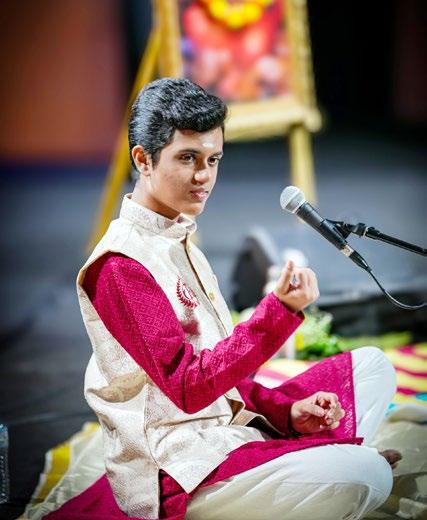
Tamil compositions.
Amba Kamakshi, a swarajathi in Raga Bhairavi is regarded as a gem in Carnatic music. Almost every great musician has chosen to perform it in live recitals. Sanjay began with an elaborate alapana for this item. With a childlike curiosity, he seemed to play with the notes or joke with the notes. The two liked each other! Sometimes it was as if he was taking us to a distant land and narrating a story intimately.
The accompanists heightened our experience of Bharavi. Then started the krithi at a slow pace.
Kāmāksi ambā anudinamumaravakanē
Nīpādamule dikkanucu nammitini śrīkañci kāmāksi
(Goddess Kamakshi! Ever remembering that your lotus feet are my only refuge, I place my faith in you, O Goddess of Kanchi).
Then with gestures of hand, eyes and face, Sanjay enacted the feelings and sentiments of the great composition, which describes the beauty of the Goddess. Further, the devotee surrenders to Her with the words,
Are you not the Paavani – the purifier? Don’t you hear my entreaties? Why are you indifferent? Pray listen, Mother.
These sentiments were rendered in notes first and then in words. Sanjay excelled in this blissful performance. Listening to him in this number was like melting into nothingness. It made one appreciate the power of music to convey emotions without the aid of words.
Sanjay presented the formal ragam thanam pallavi with raga Desh, rarely elaborated in concerts. It is a raga reserved for short entertaining pieces towards the end. After an imaginative and elaborate alapana and thanam, he chose the following poetic line from Subramanya Bharathi for the pallavi.
Enga Lka NNamm Anaghaip Ur Oj App Uengalka NNamm AvizhiindranilappU.
With neruvals giving different shades of the raga and swaraprasthara in Ragamalika, the audience was provided with a unique and pleasing experience of raga Desh. Finishing it all with the popular number in the same raga, Thunbam Nergaiyil, turned out to be the musical cherry on top.
Thaniavartanam by Neyveli Venkatesh following these items entertained the audience, especially his playing with only his left hand at times.
The concert concluded with Manna PugaL in Ragamalika.
Almost every item ended in a climax with the vocalist and the accompanists reaching their higher acoustic levels. At times, it seemed noisy to me, although the audience seemed to like it, rewarding the musicians with standing ovations.
Sanjay Subrahmanyan proved yet again that he is indeed the Master, as evidenced by the admirers who flocked to him after the concert for a selfie.
Rahul Vellal, Carnatic prodigy
Masterpieces as well as crowd pleasers
How would I describe the recent concert by Master Rahul Vellal in Sydney?
Classical? Yes, but not too classical. Light? Yes, but not too light.
Rahul’s recital at the Pioneer Theatre, Castle Hill on March 30, in aid of Sri Venkata Krishna Brindavana, was the last of the concerts he performed during his recent Australian tour.
Child prodigies emerge from time to time in the world of music. I had the privilege of watching U Srinivas (mandolin player) and Shashank Subramanyam (flautist) in action in Sydney when they were each less than ten years of age. Now it is Rahul’s turn.
Born in 2007, the young vocalist’s talents were discovered when he was only four years of age. Thanks to his parents who nurtured his skills, today he stands as one of most watched performers in the industry, with about 18 awards to his credit and international acclaim.
Rahul’s Sydney concert started after a Veda Ghosha and a lengthy introduction. True to the spirit of Sri Venkata Krishna Brindavana, Rahul first rendered Govardana Girisham in Raga Hindola. What stood out immediately
was the wonderfully clear enunciation –pleasingly, this would continue throughout the recital. Also observed was a strict adherence to ragas. The violin by Vaibhav Ramani was perfect in accompaniment.
The masterpiece Brochevarevarura followed.
The concert picked up momentum with the next item in Raga Ranjani. After an Alapane Rahul rendered a rare Kannada composition: Kadiruvenunanu shree Rama kapaduva daiva ninendu thilidu.
He was able to build up an atmosphere swiftly, with a sense of despair in the Neruval for the line Padambujaga Lapoojeyamadi followed by an entertaining swaraprasthara and chitteswara as well. It was a rare beauty indeed.
The imaginative flights of Raga Karnaranjani in Vanchatoluna were marvellously entertaining.
Nagumomu in Abheri is an all-time favourite in Carnatic music. That was performed with a good alapana, which included a small grihabheda exercise as well. Gusts of swaras during swaraprastara were delightful.
It was clear that Rahul Vellal had in mind an average concert goer, with no knowledge of intricacies of music. Rest of the items were crowd pleasers – Pibare Ramarasam, Jagadodharana, Adigo Bhadradi, Ramanai Bhajital and Bho Shambho.
The audience responded with standing ovation and frequent applause, sometimes at the wrong spots.
The mridangist Anoor Vinod Shyam rendered an impressive Thaniavartanam, so much so that the audience decided to accompany him! He wisely slowed down and encouraged them to join him. Later, he begged their permission to continue on his own! His accompaniment during the item Bho Shambho when he rendered Shiva’s drumbeats became a highlight for many.
An impressive concert, Rahul, with which to introduce yourself to the Sydney audience – we look forward to more in coming years.
18 APRIL 2024 www.indianlink.com.au CLASSICAL
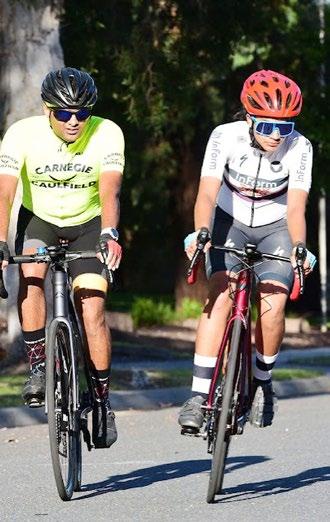

Cycling her way to the top

I“Melbourne teenager Charvi Tanksale wins national accolades in track racing
BY TARINI PURI
wish to represent Australia in the 2032 Brisbane Olympics,”says cyclist Charvi Tanksale of Melbourne.
The resolve is strong and the hard work for it has already started for the current (U-15) state track champion of Victoria and Bronze-winner at the recently concluded 2024 Aus Cycling Junior Track National Championships in Brisbane.
The Wesley College student trains most days of the month, and works out at the gym at least twice a week. It’s a hard balance with her schoolwork and keeping up with her friends but she says she enjoys the sport and the exposure it has granted her travelling around the country, competing and with making friends in the niche world of cycling.
Although Charvi has been cycling since her early years, she started enjoying it more during the long COVID-19 lockdowns, riding regularly around home with her father in January 2021. Chance participation in a road-safety program led the then10-yearold to discover indoor cycling at the DISC Velodrome in Thornbury. Having enjoyed her first brush with the sport, Charvi quickly joined the Carnegie Caulfield Club to explore the sport further and participated in her first cycling race within just a few months.
Cut to 2024, Charvi has made a place for herself in the Victoria state team, cycling competitively in the track category. Charvi enjoys the short and sharp races indoors, though she also has her eyes set on getting

into the road state team, which would take her into the regional parts of the state for longer distance cycling with bigger groups. She also enjoyed her experience at the 2024 state Keirin championship, riding behind a motorbike for a part of the race, which she believes was her best race of the year so far.
“To pursue a sport at the national level is not easy, and you must work hard for it,” she says with a maturity far beyond her age, while also admitting that she sometimes misses out on having a ‘routine’ life.
“I miss out on many activities at school or in the family, but I believe one has to take these sacrifices in stride,” Charvi says, lamenting about the school camp that she missed out on because she was away for competition.
She credits her school as well as her parents, Akshat and Sonika Tanksale for
their support and hardwork, including getting her access to the best sporting equipment, travelling with her and taking special care of her diet and other requirements. “I am a vegetarian. My mother takes great pains to ensure that I eat a proteinheavy diet. I try to keep pace with the school learning, and sometimes end up finishing my homework in the car, travelling to and from training,” she says with a smile.
It's been a completely new experience for her parents, both working as professors in Melbournebased universities.
“But that’s the advantage of living in a country that is so sporty,” explains Akshat. “It started out as a hobby for Charvi, but we saw her potential and we are very happy to support her journey. Cycling is primarily a European sport, but we are lucky that we have access to the best facilities and even coaches who have been training and guiding Charvi.”
Charvi also draws her inspiration from Sarah Gigante, winner of the 2024 Santos Tour Down Under who claimed victory despite major setbacks.
“I too had crashed twice just before the National championship but remembering her story kept me motivated,” she reveals.
Will that be her mantra for succeeding at the Olympics, still about eight years away?
“Maybe. I am focusing on getting better at my sport with short-term goals,” Charvi says.
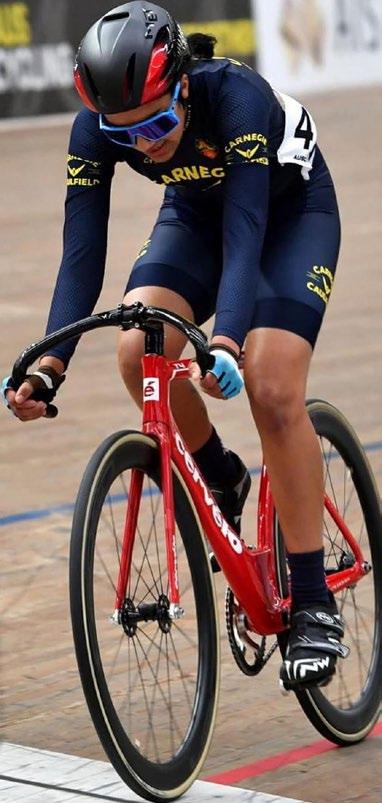
SPORT
“Let’s teach our kids to play
the game, love the game”
Cricket coach Neil D’Costa chats with DARSHAK MEHTA about his passion to produce Australian cricketers of sub-continental background
What drew you to cricket?
My father played Southern Railways in Madras, and 1st grade for Bankstown with Pascoe and Thomson. He was a very good decathlete and cricketer. He had a friend, Tom, who became his brother-inlaw, so cricket was always around me. Like most Aussie kids I grew up playing in the backyard and street and hallway. I also watched it with my grandma. I was obsessed by Greenidge and Haynes and of course Viv. As a youngster, I had only one attacking shot - the cut shot - so Greenidge became my model.
What did you see in the young
Michael Clarke?
I met Michael at age seven! He had a strong cricket pedigree also, with dad and grandfathers all having played. He was small, but a super player and I guess he became my little brother, more than student. His father was like my big brother and mentor.
We started a business together after I finished University.
Michael was a great batter who was able to manoeuvre the ball, and a sensational runner between wickets. He bowled left arm (huge!) swingers like Alan Davidson. Later, he turned to spin, which I still think was crap and we joke about it all the time. He was a great fielder and a superb tactician and motivator for his team. He was a terribly cheeky bugger, but we loved each other and were very, very close for a long period. The Clarke home was my second home.
Michael was fiercely determined and dedicated. He said, “I am going to make it, or die trying.” Simply put, we never thought he would not make it, and we never celebrated all the steps along the way. We just said OK, next thing! So much so, he called me and said, “Mate, I've just been picked to play for Australia in ODIs.” I simply replied, OK – even though I could see he was pumped. He said, “Aren't you excited or happy?”
I said, “Mmmm, why? This was the plan, anyway. We better get down to the nets. I’ll meet you there,” And, we did. He trained bloody hard - 4 am to 8 am most mornings and was super disciplined with food, sleep and preparation. He is OCD - if I moved something in the house, he was onto it! I would give his bats to young players to help them play better or motivate them, and he would get furious!
On one occasion, I said, “Come on Mick, (I’ve always called him Mick), this kid is special, he will make it all the way.”
He said, who is he?
I said his name is Phillip Hughes.
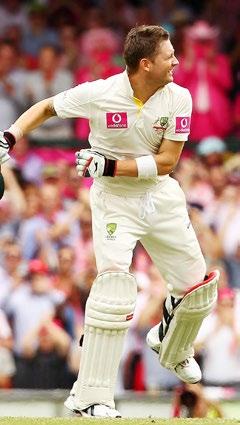
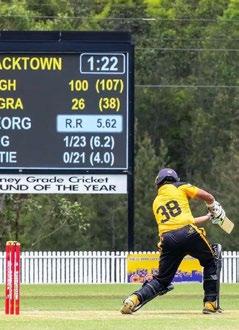

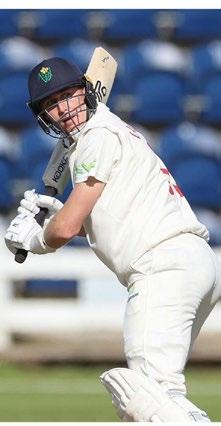
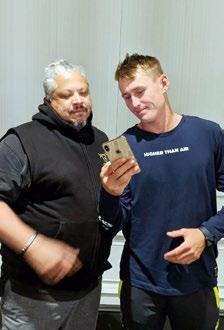

He laughed and said, “Well, you tell the little prick, he owes me a bat.”
Years later, we would laugh at this story. Good memories.
Tell us about your time coaching Marnus Labuschagne. Marnus was 19 when I met him – and the opposite of Clarke. He trained 24 hours a day, but was erratic, emotional and without a plan. We started with getting him off sugar - OMG, he used to have tablespoons of it.
I said, “Dude, this has to stop.”
He said, “Why? I am super fit!!”
I laughed and said, “No mate, your brain and you are going up and down like a yo-yo with your emotions - high, low, high, low. Also, it makes you bloody annoying.”
I guess you can say it worked!
What about the up-and-comers like Harjas Singh?
Harjas is like Yuvraj Singh with the cricket bat. It's not a bat, it's a wand…! Like David Gower and Brian Lara batting comes easy for him. BUT to be a pro, he has many mountains to climb. I've seen a change in him, though I think he now realises it is not going to just happen, he has to make it happen.
Asian players and Cricket Australia have to both make some changes. They have to get some Asians into the running of the game. And coaching.
What would you say to families of your South Asian wards?
It’s wonderful to see their commitment and their investment in their children’s game. And of course, the culture of cricket runs deep in sub-continental families. It’s what will take the youngsters far. Perhaps the opportunities to play and train are what the parents themselves missed growing up in India, and so they not only want to give their kids the best they can but even live their dreams through them.
And, that makes me very proud, you know.
Having said that though, at times I’ve seen some unacceptable behaviourtaking junior cricket way too seriously! To these parents I’ve said, please let’s focus on process, not result. Let’s teach our kids to play the game, love the game… to be good athletes, and good teammates.
Please don’t put any pressure, not even subtle.
Remember, only if your kids enjoy cricket, will they continue playing. Even if they don’t succeed in playing at the highest level, I want them to play at the highest level their ability allows, and they will become both better athletes and humans.
20 APRIL 2024 www.indianlink.com.au CRICKET
Michael Clarke
Harjas Singh
Marnus Labuschagne
Neil with Marnus
Shivani Mehta
Phillip Hughes memorial plaque

TIndia beaten in TWO World Cup Finals by Indian batting coach
BY DARSHAK MEHTA
here is an extremely famous IndianAustralian cricket coach who has an awesome record of producing top quality Test batsmen who have regularly dominated in international cricket. His proteges have included former Australian captain Michael Clarke, the late and lamented Phillip Hughes, and the uberconsistent Marnus Labuschagne.
But, Neil D’Costa ain’t stopping.
Far from it.
He is developing the next generation of superstars in both the men’s and women’s games.
He has quite a few in his talent pipeline, and the outstanding ones of sub-continental ethnicity include Harjas Singh who top scored in the recent U19 World Cup Final in South Africa to help Australia defeat India. The turbaned Harjas, an attacking lefthanded batter, has already attracted media attention and is being closely tracked by Cricket NSW.
It is not unusual for U19 cricketers to represent their countries in Tests. Three former U19 Captains - Damien Martyn, Brad Haddin, Cameron White - went on to play for Australia. Other U19 cricketers to play in the senior ranks include David Warner, Steve Smith, Travis Head, Usman Khawaja, Mitchell Marsh, Josh Hazlewood and Aaron Finch. Quite an impressive, nay predictable, transition and promotion. One hopes that Harjas Singh is able to make it too, and in the process, inspire thousands of young kids of sub-continental ethnicity.
Param Uppal has already tasted success at all levels of the game up to First Class cricket and D’Costa says his best days are ahead of him. Uppal has just finished (topper!) an outstanding season in Premier League in Tasmania.
Another of D’Costa’s star pupils, Hunar Verma, made his First Class debut last season. The lanky 6’ 6” fast bowler is a student at UNSW, with an abiding interest in Robotics as befitting his Engineering background.
Leg-spinner Smit Raval was picked for NSW. Raval worked with D’Costa for three years. A former U22 State player from Gujarat, he came here as a student. There –if you are a student from India, you do have the opportunity to play cricket and crack the big time like Smit Raval has!
Shivani Mehta is another cricketer who is highly thought of. She has already played for the NSW Women’s team (the Breakers) last year, a terrific young opener and a gun fielder – perhaps the best in Australian women’s cricket.
Nick Compton, the former English batsman, trained under D’Costa’s tutelage for over five years and it is no exaggeration to assert that it helped resurrect his flagging career.
D’Costa was born in Sydney to Anglo-
Sydney-based cricket coach Neil D’Costa continues to churn out elite cricketers of the highest quality
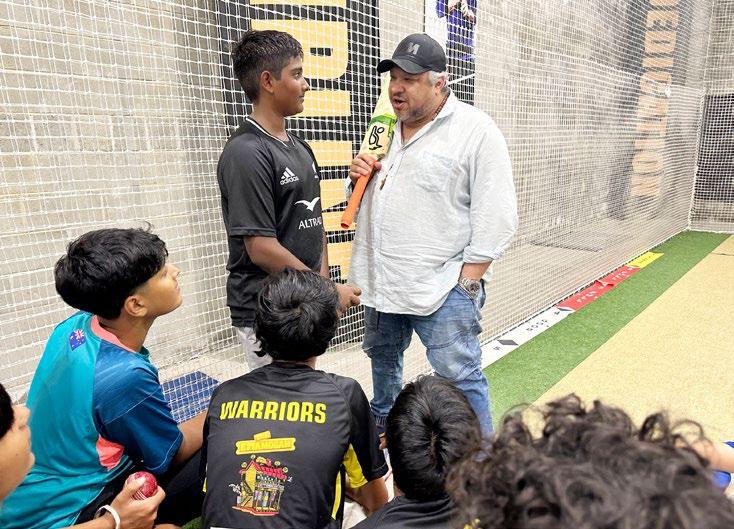
Indian parents who called Madras home. He played first grade (Premier cricket) in Sydney - the toughest non-first-class cricket in the world - for Western Suburbs, but realised his calling quite young. He started coaching aged 19.
He is a Level 3 Coach with Degrees in Sports Science, Sports Coaching & Psychology and has previous experience as Head Coach at NSW U19 and District Level.
Proud of his Indian heritage, D’Costa was also Head Coach for the first full-time cricket academy implemented by the BCCI in Vidarbha, India, about a decade ago. Vidarbha went on to win their first Ranji Trophy title with most of the players who trained under D’Costa.
Former Australian Captain Michael Clarke, talking to Indian Link, was effusive in his assessment of D’Costa.
“Neil was like a big brother, and we spent almost every day together since the age of 7,” Clarke said. “His greatest strength is he learns about his charges (students) and gets the best out of them. He does not seek to change their inherent style. Neil’s passion and love for success is transparent and authentic, even if he occasionally raises his voice or swears. He is always true to himself and will never become anyone else.”
Speaking about his personal game, Clarke revealed, “Neil knew my game very well and improved the areas which needed improvement whilst developing my strengths. He has had a huge impact and an extremely helpful one on my batting.”
He attributes his success significantly to Neil, adding, “He is the best batting coach I ever had. His knowledge of individual players and his phenomenal work ethic, combined with never seeking shortcuts, have contributed to the success of many who have trained under him.”
Clarke adds that D’Costa played a huge part in Phil Hughes’ success, and concludes by saying that Neil and his own Dad “were the two most influential people in my cricket career.”
Shivani Mehta was just as adoring of her coach. “Neil has the wildest sense of humour, even if it can be irritating sometimes,” she said. “He will rip into you if you have attitude, and is well-known to yell in frustration.”
She went on, “Neil cares a lot, and is extremely passionate. He expects the best and demands the best out of you and will not accept anything less than what he thinks you are capable of. He has the invaluable experience and aura which come from coaching the best players. He has had an incredible impact on my technique and power in the four years I have trained under him. My mental state is much stronger too, consequently.”
Yet, she chuckled, “He is not the right coach for everyone. But if you can take honest, raw feedback, he is THE one. Certainly not for the faint-hearted.”
D’Costa has several other trainees, particularly of South Asian origin who he believes have it within them to go all the way. He is particularly delighted by the achievements of young Arjun Singh in junior
cricket. A prodigy and a star in the making. There is a delicious irony: in the past six months there have been two ICC World Cup Finals in which both Australia and India have figured. In both games, highly influential innings have been played by wards of Neil D’Costa – Marnus Labuschagne in the ICC 50 Over World Cup Final in Ahmedabad in November when he held his own with a patient 58, whilst Travis Head went bang, bang, bang.
And, Harjas Singh’s 55 against India in the U19 World Cup Final was influential in helping Australia win that game.
The irony? A coach of Indian ethnicity has enabled Australia to beat India - the land of his forefathers. He understands the mindset, work ethic, family backgrounds and talent more than any Australian coach, and consequently is able to extract the best from the talented boys and girls.
D’Costa’s tremendous successes need to be acknowledged, recognised and celebrated both by the Australian cricket establishment and the Indian-Australian community of which he is a proud member. There is simply no one else in the world who has single-handedly churned out so many elite cricketers of the highest quality, in the past two decades.
And what about the Indian team?
Well, these outstanding Aussie cricketers (mostly of South Asian ethnicity) churned out by D’Costa will keep being a thorn in their flesh and contribute to Australia’s continuing cricket successes.
APRIL 2024 21
Photos: Rafay Shirazi



Border-Gavaskar Trophy expands to five-Test duel
 TBY RITAM MITRA
TBY RITAM MITRA
his summer heralds what will be a first in many cricket fans’ lifetimes: a five-Test Border-Gavaskar Trophy series between Australia and India.
It’s been 32 years since the last five-match Test series between the two nations, and the move from the four- (and occasionally two-) Test format demonstrates the value placed on the rivalry by fans, broadcasters and administrators alike.
The extended series will kick off in Perth, with tests to follow in Adelaide (day/night) and Brisbane, and Melbourne and Sydney retaining their traditional Boxing Day and New Years Tests.
To some, the announcement will be a bittersweet pill. After all, unless you’re Australia, India or England, Test cricket appears destined to continue dying a slow death without drastic intervention.
Take, for example, South Africa’s scarcely recognisable squad for its recent Test series in New Zealand, a third-string side featuring seven uncapped players and a new captain, with most first-choice players unavailable for selection given the overlapping SA20 competition. In this milieu, longer Test series are a luxury that most nations – and broadcasters – cannot afford.
But it’s indisputable that India v Australia is the jewel in Test cricket’s slipping crown. While the Ashes may carry the weight of history, from both a commercial and cricketing perspective, the Border-Gavaskar Trophy leaves the Ashes dead and buried. Even culturally, the new rivalry has in some quarters surpassed the old, with Australian greats such as Steve Smith and David Warner admitting that winning a Test series in India would mean more than an Ashes series victory.
It's a welcome decision, but ignores the plight of other Test-playing nations
The change – one that would have been unfathomable at the turn of the century – is a product of two factors.
First, the competitiveness of the contest. Since the inaugural Border-Gavaskar Trophy in 1995-96, India boasts a 2420 record against Australia, at a ratio of 1.20. It’s more than twice as good as the next-most competitive teams against the Australian juggernaut, South Africa (0.565) and England (0.537). No matter the sport, a close contest generates the closest interest.
NRMA INSURANCE MEN’S TEST SERIES V INDIA
BORDER-GAVASKAR
Secondly, it’s not just how many are watching, but who is watching. It’s no secret that performances against India get you noticed, regardless of the format. The performances of Warner, Cummins, Smith and Starc in the longest format have contributed in no small part to their broader reputation in the subcontinent – and in turn, each of their lucrative IPL contracts over the years.
The BCCI has, of course, latched onto the expanded series as a testament of its dedication to Test cricket, with Honorary Secretary Jay Shah remarking that the extended format “underscores [the BCCI’s] collective commitment to nurturing and elevating Test cricket’s significance” and its joint mission with Cricket Australia to “amplify the essence of Test cricket and uphold its legacy”.
A cynic would view these words with more than a little scepticism, for obvious reasons: if the BCCI was so steadfastly committed to “amplifying the essence” of Test cricket, it is entirely within the BCCI’s control to do so, as the financial powerhouse of the game.
The BCCI has certainly demonstrated India’s commitment to Test cricket; this is evident not only in the expanded BorderGavaskar Trophy, but also the BCCI’s recent decision not to award central contracts to former rising stars Shreyas Iyer and Ishan Kishan, after the duo refused to take the field
for their Ranji Trophy teams. There’s also no questioning the commitment of India’s biggest stars – Kohli, Sharma, Bumrah – to the longest format.
But Test cricket is bigger than the Big Three, and it’s easy for multi-millionaires like Kohli to commit to the format when their livelihoods are not at risk. It is unfair to expect players from other nations to simply “put the country first” when they could be earning life-changing salaries for significantly less work.
There are several tools at the BCCI’s disposal which would go some way towards redressing the slide of the longest format for other nations, whether through carving out a dedicated Test cricket window (or a shortened IPL window), subsidising match payments for players representing countries other than the Big Three, or guaranteeing each Test nation a minimum number of tests in each cycle.
It’s arguable that it is not solely the BCCI’s responsibility to act, with the vast majority ofits revenues attributable to the IPL, rather than ICC tournaments. But the BCCI profits in no small part from the participation in the IPL of players from other Test-playing nations, and it is primarily Test cricket which suffers in the process.
A five-Test Border-Gavaskar Trophy is certainly an exciting development for fans, but one can only hope it’s not the latest example of the ICC fiddling while Rome burns.
A five-Test Border-Gavaskar Trophy is certainly an exciting development for fans, but one can only hope it’s not the latest example of the ICC fiddling while Rome burns.
22 APRIL 2024 www.indianlink.com.au OPINION
Virat Kohli is likely to play his last Test series in Australia this summer (Photo: AP)
Rohit Sharma will lead the Indian Test side in Australia for the first time (Source: X)
Australian captain Pat Cummins faces his sternest test yet this summer (Source: Cricket Australia)
TROPHY THIS CENTURY Host Series Result India 2000/01 India 2-1 Australia 2003/04 Draw 1-1 India 2004/05 Australia 2-1 Australia 2007/08 Australia 2-1 India 2008/09 India 2-0 India 2010/11 India 2-0 Australia 2011/12 Australia 4-0 India 2012/13 India 4-0 Australia 2014/15 Australia 2-0 India 2016/17 India 2-1 Australia 2018/19 India 2-1 Australia 2020/21 India 2-1 India 2022/23 India 2-1
November : Perth
6-10 December :
(D/N)
December :
26-30 December :
3-7 January :
22-26
Stadium, Perth
Adelaide Oval, Adelaide
14-18
The Gabba, Brisbane
MCG, Melbourne
SCG, Sydney

 ABY RISHIV RATHORE
ABY RISHIV RATHORE
nd so the anticipated adrenalinefueled match between India and Australia at Windsor never transpired.
More than 100mm of rainfall and the continued risk of further flooding in the region forced the hand of the organisers to make the difficult decision to cancel the international event twenty four hours before the first chukka was to be played.
The players themselves had to be evacuated from the region before dawn, as rising water levels began to cut off road access.
The horses that were to be loaned to Team India for the match were either transported back to the safety of their stables or taken to higher ground.
However, not all was in vain. Jeremy Bayard, a director at NSW Polo Association told Indian Link, “The tour by the Indian team has cemented the relations between the Australian Polo Federation and Indian Polo Association. We are confident that within the next year or two, the Indian team will be back, and discussions are on-foot to ensure that the clash between the two countries will occur biennially.”
He added, “The team endeared themselves to the Australian Polo community in the most spectacular way. They were the most gracious, entertaining and friendly group of people that anyone could ever hope for.”
The high praises for Team India were echoed “across the length of the country – especially given that under the trying circumstances the Indian team took everything thrown at them,” he said.
Those of us who were fortunate to meet Team India in the week prior to the cancelled match would undoubtedly agree with comments from Bayard, that the team had a positive impact on the Polo-playing and nonplaying members of the Indian community.
From the very first interaction with Siddhant “Sid” Sharma and Naveen “Noddy” Singh, who shared their passion for the sport,

A cancelled match but an opportunity not lost
If the lead-up is anything to go by, the players, the horse lenders, and more importantly, the spectators are ready.
the love for the horses, and pride in playing for India, to Syed Shamsheer Ali, captain of the Indian team, it was clear that India’s most talented horsemen were also the best-suited ambassadors for the sport and their country. Shamsheer “Chamma” Ali shared stories of his Polo-playing journey with a very calming and encouraging demeanour. “My dad, himself a lover of polo, put me on a horse when I was eight,” he described. “A year later, he had introduced me to polo.”
He has not looked back since. Now 42, and known as ‘The Man with the Golden Hand’ for his exceptional skills, he has been playing professionally for just over twenty years. It is a career that has seen him play across the globe, including a five-year stint in Argentina.
Even from the brief interactions with H.H Maharaja Sawai Padmanabh Singh of Jaipur, it was clear that he was happy to have a candid conversation about his experience as a Polo player, interests in culture and heritage, and even after a cheeky quip that his highness had brought the rain with him having only joined the Indian team camp a

day prior to the deluge — he recounted his time at school in England and his dislike for the wet weather.
The Indian coach Col. Navjit Singh Sandhu welcomed the suggestion that India v Australia could become a regular fixture. “This would cement the sporting rivalry between the two countries beyond the likes of Cricket and Hockey,” he observed. “This would be yet another example of the unique power of sports diplomacy - bringing people and communities closer together through a shared love of a physical pursuit.”
Many newcomers to the sport of Polo may look on and see a player on top of a horse that is doing all the hard work, but ask any person who has ridden, let alone played a chukka (or six), and they know the strain that the sport puts on the body. And while the off-field proclivities at a Polo match suggest a balanced fine dining experience, the sport is very much a contact sport for those competing.
Picture riding on horseback, controlling your horse with one hand while using only
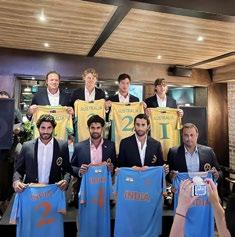
your right hand to swing a thin, bamboo stick with not much more than a cigar’s width of wood at the end, aiming at a ball the size of a cricket ball that could be bouncing waywardly across grass cut up by rampaging hooves—cue opponent—who at the same time is trying to ram you out of the way by charging at you shoulder to shoulder.
All this and more were what Polo enthusiasts and newcomers were hoping to witness on Sunday, 7 April 2024, in the now cancelled match between India and Australia. However, it is important to recognise that Polo is an expensive sport due to the number of horses needed to play and all the associated costs of breeding or buying, looking after, training, and keeping them fit. Patrons are undoubtedly an important aspect of the sport, and their financial support is necessary. Whether veterans of the sport or newcomers—players or spectators—there is a unique opportunity to elevate the sport of Polo between two closely linked countries, with a healthy sporting rivalry. If the lead-up to the game is anything to go by, the players, the horse lenders, and more importantly, the spectators are ready.
In the meantime, our thoughts are with the Polo and wider Hawkesbury community as they attend to the flood conditions in the region. We hope this unfortunate setback will strengthen the Australian and NSW Polo communities' resolve to re-invite the Indian Polo team back for a match with Australia in the not-so-distant future.
If the cancelled match is to be treated as the inaugural biennial fixture—the result will be marked as DNP. Looking forward to hopefully seeing Team India play at the Windsor Polo Club no later than 2026.
APRIL 2024 23
POLO
Captain Shamsheer Ali (Photo: Insta / @shamsheer.ali)
H.H Maharaja Sawai Padmanabh Singh of Jaipur (Photo: Insta / @pachojaipur)
The teams at jersey presentation
Australian team captain Ruki Baillieu with Padmanabh “Pacho” Singh

Two dads, one dream
Vignesh and Andrea, loving dads to 3-year-old Meenakshi, have embarked on a journey to parenthood filled with hurdles and triumphs
 HBY MAMTA SHARMA
HBY MAMTA SHARMA
ere’s a unique diverse family in Sydney that has captured the hearts of thousands online.
Meet Vignesh Chandrasekaran and Andrea Carboni, a loving couple raising their three-year-old daughter Meenakshi in a household filled with laughter, love, and shared responsibilities.
Through their Instagram account "Dads of Meenakshi," with over 83.3K followers (and counting), Vignesh and Andrea offer a glimpse into the joys and struggles of gay parenthood, challenging societal norms and inspiring others to embrace love in all its forms.
Facing legal hurdles in their home country of New Zealand, where outdated laws hindered their adoption process, Vignesh, originally from the culturally rich city of Madurai, Tamil Nadu, India, and Andrea, with roots tracing back to Italy, turned to surrogacy as a means of realising their dream of being parents.
The decision to bring Meenakshi into
their lives stemmed from a heartfelt conversation, fuelled by their shared longing for parenthood.
“We crossed paths in New Zealand, our shared journey beginning in 2012,” Vignesh told Indian Link. “Over six years, our bond deepened, and like any couple, we dreamt of a future together. The desire to nurture and raise a child together was very high within us. Our respective cultural backgrounds played a significant role in our decision. Family is deeply ingrained in both our cultures, and the idea of creating our own family unit held immense appeal. Conversations turned to the possibility of starting a family, and adoption seemed like a natural choice. However, the reality of outdated laws from the 1960s dashed our hopes in New Zealand. With adoption off the table, we turned to surrogacy.”
However, the road to parenthood was fraught with challenges, both logistical and emotional.
From New Zealand to Australia and eventually to the United States, where their daughter Meenakshi was born, the couple found themselves grappling with the complexities of navigating through the legal systems of three different countries. "It was a challenging time, and to top it, we had to
deal with COVID and lockdown," Vignesh recalled. "We did have support over the phone and all that from friends and family members, but not in person, which was a huge thing at that time."
Even to arrive at this point had in itself been an arduous journey.
"Just the process of having a baby is very challenging for same-sex couples,” Vignesh noted. “It actually took us four years just to get to the point of deciding on IVF - because it costs a packet! We had to save quite a lot of money."
Amidst these challenges, Vignesh and Andrea also faced the task of educating and enlightening those around them, particularly their families. In a world where the concept of gay parenting was largely unfamiliar, their families found themselves in uncharted territory.
"Both of our families have never seen a gay couple with a child,” Vignesh shared. “They lacked real-life examples beyond celebrity figures like Elton John!"
Some tough conversations ensued, such as how they would raise a child without a mother figure.
However, with the arrival of Meenakshi, their families witnessed firsthand the love and care that Vignesh and Andrea bestowed
upon their daughter. “Despite coming from a different generation with preconceived notions, they saw that men are capable of giving nurture and care to a child,” Vignesh revealed.
Now, says Vignesh, they play an active role as grandparents in their family life, which is incredibly beautiful to see.
“I cherish their involvement and the joy they bring to Meenakshi's life.”
Reflecting on their journey as gay parents, Vignesh and Andrea emphasise the universality of parenthood. Despite societal perceptions, they've found no difference in the day-to-day responsibilities of raising Meenakshi compared to heterosexual parents.
As Vignesh aptly put it, “I don't think your sexual identity matters when it comes to being a parent. In the end, being a parent is about love and responsibility, regardless of sexual identity. Every day, our thoughts revolve around the same things as any other parents: planning meals, scheduling bath times, preparing activities for tomorrow. It's all about the routine and the instinctual drive to care for our child.”
Vignesh and Andrea approach the topic of their family dynamic with openness and honesty, recognising that Meenakshi, at her
24 APRIL 2024 www.indianlink.com.au FAMILY
young age, already grasps the concept of having two dads. They observe her natural understanding as she interacts with her peers, effortlessly assigning roles in cartoons to fit her family structure. As she grows older and her communication skills develop, they anticipate engaging in more in-depth conversations about family diversity.
How do they plan to address the questions or curiosity Meenakshi may have about their unique family dynamic?
“Engaging in open conversations with children is essential,” Vignesh said. “It's a natural curiosity that arises, and addressing it openly is crucial. I firmly believe that having these discussions with Meenakshi will foster understanding and acceptance. It’ll just be a part of the normal process of growing up and learning about the world around her.”
In their personal circles and the broader community, the experiences have been predominantly positive, said Vignesh. “Surprisingly, pleasant encounters have outweighed the unpleasant ones. For instance, during a recent visit to India, my parents organised a large family gathering, inviting around 60 to 70 people. It was a heartwarming gesture that touched me deeply. Considering the conservative upbringing they had in Madurai, it was remarkable to witness their openness about my sexuality and our family dynamic with neighbours, friends, and extended family members. Their acceptance and pride in us now are evident, as they wholeheartedly embrace Andrea, Meenakshi, and our journey together. It's incredibly gratifying to see how far we've come as a family.”
As they navigate through the joys and challenges of parenting, they recognise the impact of their Instagram account and social media platforms on normalising LGBTQ+ parenting and raising awareness, offering hope to others, especially in countries like India where acceptance is still evolving.
Initially, he anticipated that his account would largely attract gay male followers, but he’s been surprised to find that the majority of his followers are actually straight women. Messages of support come from unexpected places. “People have reached out from some really remote places, to say, ‘you're doing such a great job raising a child.’ I never imagined this would happen. From that sense, it 100% reaches places where you would normally not reach.”
However, Vignesh also highlights the darker side of social media, noting the prevalence of trolling and hate messages particularly as his posts gained more

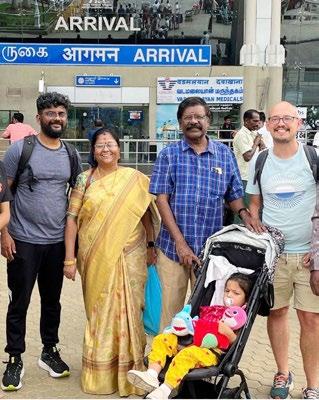
traction. The influx of hate messages became so overwhelming at one point that he ceased posting for over a month. Vignesh recounts a particularly alarming incident when he travelled to India with his husband and daughter, receiving threatening messages expressing a desire to harm him. Overall, while social media platforms like Instagram have the potential to raise awareness, Vignesh emphasises the need to address the darker aspects of online behaviour and the importance of creating a safer online environment for all users.
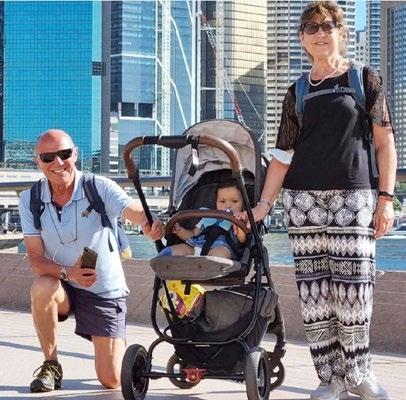
decision. “Take care of your financials. The rest will fall into place. I have witnessed firsthand the harsh treatment some young individuals face, including being kicked out of their homes or subjected to conversion therapy, now thankfully outlawed in Australia.”
“During a recent visit to India, my parents organised a large family gathering, with 60 to 70 people. It was a heartwarming gesture that touched me deeply. Considering the conservative upbringing they had in Madurai, it was remarkable to witness their openness about our family dynamic with neighbours, friends, and extended family members.”
Vignesh also urges parents and family members to accept their children unconditionally.
some time, but it'll definitely be worth it.”
Discussing the disappointing lack of legalisation of same-sex marriages or civil partnerships in India, Vignesh highlighted the dire consequences of this absence of legal recognition citing a case in Kerala, where the death of a gay man reignited the discussion on LGBTQ rights, as his family refused to claim his body. Despite his partner's desire to handle the funeral arrangements, legal recognition of their relationship prevented him from doing so. This incident underscores the challenges faced by LGBTQ individuals and their partners in accessing basic rights and recognition under existing laws.
“When people think of gay marriages or civil unions, the assumption is that it's primarily about the celebration, but that's just a small aspect. What's truly essential is ensuring the basic rights such as decisionmaking during critical moments, access to joint assets, and insurance, which straight couples take for granted – these are often overlooked.”
It's not surprising that he has some advice for others like him contemplating coming out or becoming parents. He stresses that financial stability should precede the
“By just accepting your child for who they are, you're not going to lose anything. They are what you have in your life. Abandoning or disowning your child serves no purpose.
If you fail in this, there will be no meaning to your own life. I admit, accepting your child could be a learning process. It could take

Many couples, including his friends, face uncertainty about their future and mental health challenges due to the lack of legal recognition. Vignesh advocates for at least the establishment of civil unions, which could alleviate many problems without offending cultural or religious sentiments. He also sheds light on the plight of straight women and gay men who are often forced into unwanted marriages due to societal pressures.

APRIL 2024 25
Loving grandparents in a wonderfully mixed family
At home
in Madurai: Thirumogur Perumal Temple and St. Mary's Cathedral
Forgive me
An incident from twenty two years ago that changed Akilla’s life, comes back to change it yet again.
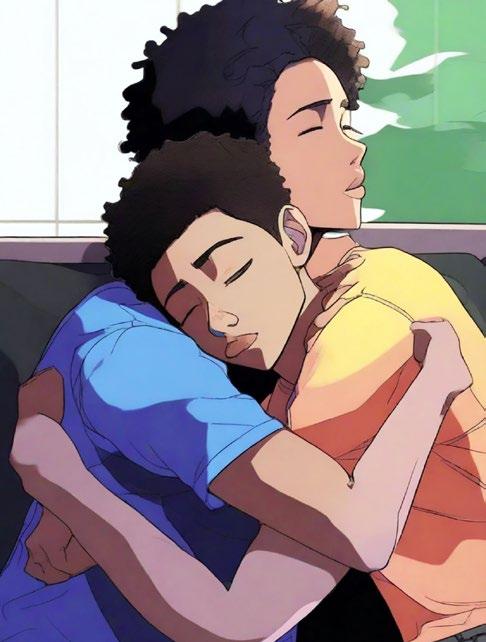
 WBY Thevakie Karunagaran
WBY Thevakie Karunagaran
hen Nathan arrived at Sydney Uni to study science, he blended right in.
Back home at Mudgee he had always felt unique, thanks to the brown of his skin.
At Sydney Uni, however, every skin tone in the colourist’s palette was visible! The white students too were sun bronzed, and looked Maltese rather than Anglo-Saxon.
Nathan loved it all, instantly.
When everyone gathered and talked about where they were from, Nathan said, “I'm Australian. My parents adopted me from Sri Lanka.”
“North or south of Sri Lanka?” someone asked.
“I don't know,” Nathan answered, slightly embarrassed.
His skin colour aside, he had always felt Australian in thought and culture. And yet, now, he found himself drawn towards people of a similar ethnicity. He couldn’t explain it. When they spoke in their native language, he did not understand, and felt
the starry sky, enjoying the cool breeze and their favourite Cabernet Sauvignon, Nathan gathered the courage.
“Mum, Dad, what do you know about my… uh… my… real parents?”
Emily and Chris were taken aback, but managed to stay calm because they had expected this question to come one day.
It was Emily who responded first, her eyes welling up. “Sweetheart, we knew you would ask one day, but we also wanted to wait until you felt ready to inquire,” she said, gently drawing him to her. “Nathan, we know nothing about your parents. As we were not blessed with children, we adopted you from Sri Lanka. We heard about the suffering caused by the war, the children left without support, and when we heard about you, we knew we had found our child to love.’’
Chris put a comforting hand on Nathan's shoulder. “We love you just as much as if you were our own flesh and blood. You are our son, no matter where you came from.”
Nathan felt a mix of emotions swirling inside him. Confusion, sadness, but also a strange sense of relief, as if everything suddenly made sense, even if it didn’t really.
“I... I don't know what to say,” Nathan murmured, his voice breaking.
“You don't have to say anything, Nathan,” Emily said softly. “Just know that we love you, and we will support you no matter what.”
The next few days were a blur for Nathan. He tried to go about his usual routine, but his mind was elsewhere. He couldn't shake the feeling that a part of him was missing, that he needed to find out more about his biological mother.
It was a week later when he said to Emily and Chris, “If it’s ok with you, I’d like to go to Sri Lanka.”
When there was no answer, Nathan put his arms around his mum’s shoulder, and said, “You will always be my mother and father. I am blessed to have parents who are kind and sensitive and who have given me a wonderful life. If you are not happy about my idea, I’ll reconsider.”
“No, no, dear, you can go freely,” Chris said. “You have our full support.”
Emily brought out the adoption papers.
His first feel of his country of birth was the welcoming embrace of the hot humid air.
In Colombo, the investigator took Nathan and Sivakanthan to an orphanage in Vavuniya in the Northern Province. There they learned that Nathan’s grandfather Velayutham had brought him here. His mother Akilla’s poverty, it was explained to him, was the reason she gave him up for adoption.
Velayutham was not to be found at the address they were given. Following more inquiries and wandering around in search, they finally traced him to a village called Chettikulam near Vavuniya.
As they set out to meet him, Sivakanthan said, “Do you know, Velayutham is a Tamil name. You could turn out to be my relative!” Nathan knew this was his friend’s way of easing the tension. He smiled in reply, “Then we’ll become true machan.”
Velayutham, they found, was bedridden and suffering from dementia. His younger sister Pakiam, who was also his carer, had some answers. Akilla had migrated to Adelaide, Australia, she revealed, and provided an address and phone number.
Like a boomerang, Nathan returned to Australia in the search for his mother.
“Your next destination should be Adelaide,” Emily said to him.
“I’ll go,” said Nathan, and added with a plea, “But I’d like you to come with me.”
“Dear Nathan, Emily replied smiling brightly.“I was just about to ask!”
At the hotel in Adelaide, Nathan took out Akilla's contact details. Feeling nervous yet determined, he dialed, then abruptly ended the call to calm his nerves, glancing at his mother for reassurance.
“Don't be nervous, dear,” Emily encouraged softly.
He dialled again.
“Hello!” a mature voice answered at the other end.
Heart pounding, Nathan said, “Akilla………Shaan….mugam please?”
He struggled to pronounce the name Shanmugam.
“Yes,” came the answer.
somewhat conflicted. He liked the way they referred to each other as 'machan', and soon learned that it was their version of ‘mate’.
Many had migrated to Australia between ten and fifteen years ago.
When one friend Sivakanthan invited him home to dinner, he accepted readily. He was delighted at Siva’s parents’ warm welcome, but was disappointed when he struggled to enjoy the various dishes they served. Having been raised on very Australian fare, this Sri Lankan meal was far too spicy for his palate.
His parents Emily and Chris, who owned several acres of vineyards, had raised him lovingly and flawlessly, with good values. They were well-respected in Mudgee, and he also received the same regard. His life, which had been a clear stream thus far, now felt as if something was missing and incomplete. What is my origin, and who is my biological mother, he pondered? Many questions arose in his mind. ***
Back home in Mudgee for the summer, Nathan decided he would find out more about his biological mother. Confused and worried as to how to broach the subject with his parents, he had many sleepless nights. Some nights it was the hooting of the owls and the chirping of crickets that rocked him to sleep. One night, as they sat in the garden under
“Nathan,I understand totally that you want to look for your birth mother,” she said caressing his back. “Just be prepared, though. Your search may go wrong.”
***
Nathan got together with Sivakanthan to devise a strategy. First up, they sent the adoption documents to a private investigator in Sri Lanka, to seek information about the parties that had given him up for adoption. It took a year for them to hear back – the authorities had found some information.
Nathan was ready to travel to Sri Lanka, the land of his birth, and to find out more about his mother. He knew it wouldn't be easy, but he felt a deep-seated need to connect with his roots.
As he boarded the plane to Colombo, his trusted friend Siva by his side, he felt a mix of excitement and apprehension. He didn't know what he would find in Sri Lanka - he just knew he had to go. He had to find the missing piece of himself, to finally answer the questions that had been plaguing him for so long. As the plane took off and soared into the sky, Nathan closed his eyes and took a deep breath. The journey ahead would be difficult, but he was ready. Ready to uncover the truth about his past, and ready to forge a new future, one that embraced all parts of who he was. ***
“My name is Nathan... Grandma told me to meet you,” he said in.
“Which grandmother?”
“Paakiam Grandma.”
“Oh, really! Is everyone safe in Chetikulam?”
“Yes, they are all well. I live in Sydney. I met Patti when I went to Chettikulam. Can I meet you?”
“I’m at work tomorrow. I can come to the Cibo cafe on Victor Street at lunch time, say one o'clock. Can you meet me there?”
Nathan said with confidence, “I’ll be there.”
It was well before that time that Nathan got to the café, taking a seat and anxiously looking at the entrance. The temperature outside was forty two degrees. Inside the airconditioned cafe, it was cool and comfortable.
Soon a young Indian looking woman, around thirty five years old, entered the restaurant, causing Nathan's heart to race. He thought to himself that she seemed too young to be his mother. However, she approached and said, “Nathan?” with a raised eyebrow and a smile.
“Yes,” Nathan replied, immediately standing up and pulling out a chair for her to sit down. He took a seat opposite her. As he looked at Akilla’s smiling face, his heart skipped a beat. He noticed the dimples on her cheeks, just like his own when he smiled.
Akila sat down and looked at him from
26 APRIL 2024 www.indianlink.com.au
***
FICTION
head to foot. “How are you related to me?” she asked, breaking Nathan's reverie.
Nathan sat transfixed by the woman who had given him life.
“Are you ok?” Akilla prodded.
“Mother,” Nathan finally blurted.“I am… your son.”
Akilla felt as though she had been hit with a hammer, and time seemed to stand still. She placed a hand on her chest to calm the palpitations of her heart. Then, she stuttered, “Wh….at a…re you saying? No way.”
“I went to Sri Lanka and inquired at the Vavuniya orphanage,” Nathan explained. “It was recorded that as soon I was born, Velayutham Patta admitted me to the Ashram. I went to the Chettikulam address they gave me and saw Patta, who was ailing, and it was Paakiam Paati who gave me your address.”
“Oh... but the child had died... that's what I was told?” Akila's voice rose in surprise, her eyes wide open.
Nathan sat there, stunned. His whole world seemed to shift beneath him. “Now I am supposed to be dead,” he whispered, almost to himself. Pale-faced and swallowing saliva in his parched throat, asked, “Did Paata tell you I was dead?”
Akilla sat staring at Nathan's curly hair, fair complexion and majestic body, her stomach churning. Nathan also studied Akilla's face.
“I have your parrot nose, and dimples in the cheeks,” he said, finding strength in the connection he was beginning to feel. “I'm not dead... I'm alive. Your son is alive!”
Akilla continued to gape, still speechless. “Mother,” Nathan said slowly.“Can I call you that? Why did Paata say that I was dead?”
Nathan's question echoed in Akilla's mind as the horrifying events of twentytwo years ago flashed before her eyes like vivid video footage.
Gathering herself, she found her words, which came out thick and heavy.
“Nathan, have you heard about Sri Lanka's Thirty Years Civil War? The devastation caused by it…it cannot be told in words. Your father was one of the many victims of the Sri Lankan army's bombing.”
Overcome with emotion, she fell silent again briefly.
“I fell in love with your father and got married to him at the age of 15, against your grandfather's approval,” she related. “I was with child when your father died in the war.
I had already lost Mother. It was Father who admitted me to the hospital when it was time. It was he that told me that you were a stillborn baby boy. I returned to school, and went on to university. I got married in an Adelaide-based family. My husband and I now have two children. They don't know about my past misery. I never dreamed that you would come and stand in front of me like this, my dear son! My poor father has deceived me!”
Akila covered her face with her hands and sobbed.
Nathan's joy at meeting his mother was now shadowed with the pain and suffering she had endured. Stroking her arms gently, he could only utter the word, “Mother,” as if in reassurance.
Coming back to reality, Akilla asked, “How did you come to be here... in Australia?”
“I was adopted from the orphanage in Vavuniya as a six-month-old baby by my foster father Chris and mother Emily. They have brought me up with no shortage of affection and educated me well. But I wanted to know my identity, and above all, my mother and father who gave me life.”
Both sat in silence, thinking and unable to digest the events that happened twenty two years ago. Nathan, composing himself, said, “Mother! Thank you for giving me life, and not destroying me in the womb when your life was upside down. My parents who brought me up are by my side helping me to look for you. Even now, Mum Emily has come to Adelaide and is waiting for me at the hotel.”
He then took his phone out and asked if he could take a selfie. As they hugged, tears ran down their cheeks.
As Nathan left the restaurant, the tears did not stop for Akilla, instead becoming an uncontrollable sob.
The brutality she had faced in Sri Lanka twenty years ago haunted her.
The lies she had just told her son, may have shocked him, but weighed heavily on her conscience now.
The Government’s army not only destroyed the land of the Tamils, but also soiled the Tamil women. How would she ever tell her son that she was one of them - one of those with a secret, that must die with her?
How would she ever tell him?
As she took her first steps out of the restaurant, knowing she was a changed woman forever yet again, she said under her breath, "God, please forgive me."



APRIL 2024 27
Join one of Australia s leading coaching colleges offering tutor ng for students from 3 – 18 years old Established for over 30 years with over 65 + campuses in Australia and Hong Kong Inviting individuals passionate about education to join our dynam c and innovat ve organ sation Existing and New Locations in growth areas are available Comprehensive training and ongoing support provided Established Enrolment Administration System Student and Teacher Portal and training to support your operat ons FRANCHISE OPPORTUNITY IN EDUCATION www north-shore com au For an obligation-free meeting please call 0411 388 868 Run your own business – be your own boss Run your own business – be your own boss
Influenza is a common respiratory infection.
Although most cases are relatively mild, flu can cause more severe illness in young children and older people.
Influenza virtually disappeared from Australia during the first years of the COVID-19 pandemic when public health restrictions reduced contact between people. Since 2022, it has returned to a seasonal pattern, although the flu season has started and peaked a few months earlier than before 2020.
It’s difficult to predict the intensity of the flu season at this point in the year, but we can sometimes get clues from the northern hemisphere. There, the season started earlier than usual for the third year running (peaking in early January rather than late February/ March), with a similar number of reported cases and hospitalisations to the previous year.
Influenza vaccines are recommended annually, but there are now an increasing number of different vaccine types. Here’s what to know about this year’s shots, available from this month.
What goes into a flu vaccine?
Like other vaccines, influenza vaccines work by “training” the immune system on a harmless component of the influenza virus (known as an antigen), so it can respond appropriately when the body encounters the real virus.
Influenza strains are constantly changing due to genetic mutation, with the pace of genetic change much higher than for SARS-CoV-2 (the virus that causes COVID). The strains that go into the vaccine are reviewed twice each year by the World Health Organisation (WHO), which selects vaccine strains to match the next season’s predicted circulating strains.
All current influenza vaccines in Australia

There are new flu vaccines on offer for 2024
Should you get one? What do you need to know?
Prof. ALLEN CHENG of Monash University has the answers


contain four different strains (known as quadrivalent vaccines). One of the strains appeared to disappear during the COVID pandemic, and the WHO has recently recommended dropping this strain from the vaccine. It’s expected trivalent (three strain) vaccines will become available in the near future.
What’s different about new flu vaccines?
There are eight brands of flu vaccines available in Australia in 2024. These include egg-based vaccines (Vaxigrip Tetra, Fluarix Tetra, Afluria Quad, FluQuadri and Influvac Tetra), cell-based vaccines (Flucelvax Quad), adjuvanted vaccines (Fluad Quad) and high-dose vaccines (Fluzone High-Dose Quad).
Until recently, the process of manufacturing flu vaccines has remained similar. Since the development of the influenza vaccine in the 1940s, influenza viruses were grown in chicken eggs, then extracted, inactivated, purified and processed to make up the egg-based vaccines that are still used widely. However, there have been several enhancements to influenza vaccines in recent years.
Older people’s immune systems tend not to respond as strongly to vaccines. In some flu vaccines, adjuvants (components that stimulate the immune system) are included with the influenza antigens. For example, an adjuvant is used in the Fluad Quad vaccine, recommended for over 65s. Studies suggest adjuvanted influenza vaccines are slightly better than standard egg-based vaccines without adjuvant in older people.
An alternative approach to improving the immune response is to use higher doses of the vaccine strains. An example is Fluzone High-Dose Quad – another option for older adults – which contains the equivalent of four doses of a standard influenza vaccine. Studies suggest the high dose vaccine is better than the standard dose vaccine (without an adjuvant) in preventing hospitalisation and complications in older people.
Other manufacturers have updated the manufacturing process. Cell-based vaccines, such as Flucelvax Quad, use cells instead of eggs in the manufacturing process. Other vaccines that are not yet available also use different technologies. In the past, manufacturing issues with egg-based vaccines have reduced their effectiveness. Using an alternative method of production provides some degree of insurance against this in the future.
What should I do this year?
Given indications this year’s flu season may be earlier than usual, it’s probably safest to get your vaccine early. This is particularly important for those at highest risk of severe illness, including older adults (65 years and over), those with chronic medical conditions, young children (six months to five years) and Aboriginal and Torres Strait Islander people. Influenza vaccines are also recommended in pregnancy to protect both the mother and the baby for the first months of life.
Influenza vaccines are widely available, including at GP clinics and pharmacies, while many workplaces have occupational programs. For high-risk groups, four of the vaccines are subsidised by the Australian government through the National Immunisation Program. In older people, a number of vaccines are now recommended: COVID and influenza, as well as one-off courses of pneumococcal and shingles vaccines. In general, most vaccines can be given in the same visit, but talk to your doctor about which ones you need.
Are there side effects?
All influenza vaccines can cause a sore arm and sometimes more generalised symptoms such as fever and tiredness. These are expected and reflect the immune system reacting appropriately to the vaccine, and are mostly mild and short-term. These side effects are slightly more common in adjuvanted and high dose vaccines.
As with all medications and vaccines, allergic reactions such as anaphylaxis can occur after the flu vaccine. All vaccine providers are trained to recognise and respond to anaphylaxis. People with egg allergies should discuss this with their doctor, but in general, studies suggest they can safely receive any (including egg-based) influenza vaccines.
Serious side effects from the influenza vaccine, such as Guillain-Barré syndrome, a neurological complication, are very rare (one case per million people vaccinated). They are thought to be less common after influenza vaccination than after infection with influenza. This article was originally published in The Conversation
28 APRIL 2024 www.indianlink.com.au WELLNESS
VIRDI ENGINEERS ROOF RESTORATION Professional advice at the lowest price Serving the community for over 20 years Lic. No. 114274C Pay in easy interest free installments* *Conditions apply. Limited period only. Contact Harjit today! Call: 0412 254 015 Fax: (02) 9920 1044 web: virdiengineers.com.au Roof restoration Guttering solutions Whirly birds Driveway cleaning & painting Fencing & retaining walls Skylights Sunrooms Leaf guards Carports, decks, patios & pergolas
Comforting chicken stew
A slight variation of the original, this chicken stew is just as cozy

 ABY DHANYA SAMUEL
ABY DHANYA SAMUEL
stew (or ‘ishtu’ as it is often called) is a popular dish in Kerala, especially enjoyed for breakfast.
The Kerala style stew is quite different from its Western counterparts, distinctly characterised by the addition of coconut milk. It’s a light dish, not heavy on masala or spices since it’s intended as a light meal.
Mild but fragrant and aromatic, the key flavours here are green chilli, ginger and peppercorns. Made with both vegetables and meat, the mutton stew is perhaps the most popular, often served as a breakfast item at weddings. If you prefer a vegetarian version, do try with potatoes or mixed vegetables – delicious!
The recipe presented here is a variation of the classic chicken stew. While the base of the stew remains the same, the difference
is that the chicken pieces are first marinated and shallow fried before adding to the coconut milk gravy. Marinating and frying the chicken pieces before adding to the stew not only adds more flavour but also provides texture.
There are many ways to enjoy this fried chicken stew. Popular accompaniments are fermented rice breads like appams (hoppers), dosas or idiyappams (string hoppers). Another simple and delicious pairing is soft white bread – the stew must be poured on top of the bread – let it soak the gravy for a minute and then dig in!
The stew also makes for an excellent pairing with the delicious Malabar-style ghee rice.
I have paired this Kerala style fried chicken stew with kal dosa – a thicker, softer and spongy variant of the regular dosa (fermented rice crepes). Usually, the same batter is used but instead of spreading it out into a thin crepe, it is spread thicker like when you make a pancake. The spongier texture of the kal dosa makes it an ideal vehicle for soaking up the stew…. absolute deliciousness.
KERALA-STYLE FRIED CHICKEN STEW
Ingredients
700 gms chicken (with bones), cut into really small pieces
2 medium potatoes, diced.
For marination
n ½ tsp turmeric powder
n 1 tsp red chilli powder
n 1 tsp ginger, grated
n 1 tsp garlic, crushed
n ½ tsp garam masala
n ½ tsp fennel seeds, crushed
n 2 sprigs curry leaves
n Juice of ½ lemon
n Salt, to season
n Coconut oil for shallow frying the chicken
For the gravy
n 4-5 green chillies (add more or less depending on the heat of the chillies used)
n 2-3 sprigs curry leaves
n 1-inch piece ginger, julienned
n 1 large onion,diced
n 200 ml coconut milk (thin extract)*
n 200 ml coconut milk (thick extract)
n 1 tsp black peppercorns,crushed
n Salt, to season
*If you are using canned coconut milk, then dilute 200ml of coconut milk with 150ml water to get the thin extract.
Method
n Clean and wash the chicken pieces; drain well.
n Marinate using all the ingredients listed, and set aside for 30 minutes to an hour.
n Heat coconut oil in a pan, and shallow fry the chicken pieces till just about done. (Don’t overcook the chicken as it tends to go rubbery after adding to the stew gravy). Do this in batches and keep aside.
n In another pot or pressure cooker, add the diced potatoes along with the green chillies, half of the curry leaves and ginger, onion and season with salt.
n If using a pressure cooker, do not add any water and cook for just one whistle. If using a regular pot, add ½ - 1 cup water, just enough to cook the potato.
n Once the potatoes are cooked, add the thin coconut milk extract and the fried chicken pieces. Bring to boil and then simmer for 5 minutes. Taste and season with salt if necessary.
n Reduce heat and add the thick coconut milk extract and crushed black pepper. Mix and remove from heat.
n Serve warm garnished with curry leaves and julienned ginger.
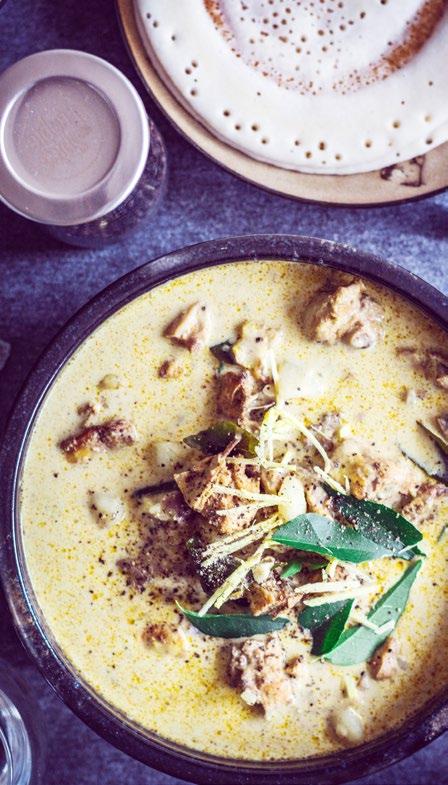
APRIL 2024 29 FOOD



An ancient Hindu legacy in Central Vietnam
The ruins of red brick temples are all that remain of the Champa dynasty that was in power for centuries
 TBY SANDIP HOR
TBY SANDIP HOR
he moment Vietnam Airlines flight VN 772 took off from Sydney to Ho Chi Minh City, a sense of excitement engulfed me. This was not because I was once again travelling to Vietnam, a favoured destination which has never failed to intrigue me, but because I would be digging into the past to trace the
legacies of a lost Hindu kingdom.
The Indo-Chinese kingdom known as the Champa or the Cham, ruled with glory the seaside region of Central Vietnam between 2nd and the 19th centuries. It followed Hinduism as the state religion at a time when Buddhism, Taoism, Christianity and Islam were practised in the surrounding regions. The Cham kings built a series of
temples dedicated to Lord Shiva during their reign. Some still exist to testify to the artistic talent of the time, comparable to the builders of Angkor Wat in Cambodia or the Borobudur or Prambanan Temples in Indonesia.
For a history and art aficionado like me, there was a quantum of visual feast awaiting.
Vietnam today is one of the most tourist-
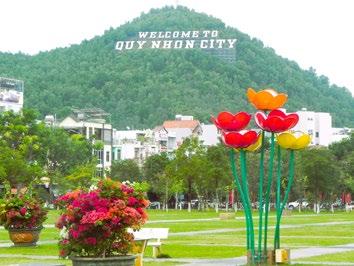
infected destinations in Asia, particularly from Down Under, because of its diverse range of attractions that stretch from antiquity to modernity, progressive infrastructure in big cities, and lively atmosphere. Add to this, reasonable cost structure for five-star facilities and availability of direct flights from three Aussie cities (Sydney, Melbourne and Perth)

30 APRIL 2024 www.indianlink.com.au TRAVEL
Temple ruins at Quy Nhon (left) and at My Son
Quy Nhon
Hoi An
offered by Vietnam Airlines.
At the turn of this millennium, when Vietnam opened its doors for international tourism, the itinerary generally included the capital Hanoi, World Heritage listed Ha Long Bay in the north, and Ho Chi Minh City, formerly Saigon, in the south. While nature thrives in Ha Long Bay, Hanoi and Ho Chi Minh City are a treasure trove of history, mainly around French colonisation, Ho Chi Minh’s life, and the Vietnam War.
Central Vietnam on the other hand, is often overlooked, even though it issteeped in history and natural beauty. Perhaps this has been due to lack of tourism infrastructure. With time, infrastructure development has progressed immensely in the region, resulting in significant growth in visitor numbers. Hue the former capital, Hoi An the ancient river port, Quy Nhon the seaside retreat and Da Nang the ultramodern hub of the region are the hotspots.
Occupying a large seafront area of Central Vietnam, the Cham dynasty came into command in the 2nd century AD achieving its zenith between the 4th and 13th centuries as naval power. Located near their first capital, modern-day Hoi An was their most significant maritime hub because of its strategic setting on the fabled Silk Route.
Built on the banks of the Thu Bon River, this river port settlement hosted merchants from China, India, Persia, Japan, and Europe, who in large numbers sailed there to buy and sell spices, silk, jewellery and other merchandise. Some of the traders never went back to their country of origin; their permanent stay made Hoi An cosmopolitan. The beauty of Hoi An is that it has preserved much of its architectural setting and old-time character from the 15th century onwards. The magic there is to soak oneself in the bygone ambience, andadore the loveliness of those centuries-old timber houses lining the original street layout.
The Cham rulers followed Hindu consciousness introduced to them by visiting traders from India. They built a series of red-brick temples dedicated to Lord Shiva at My Son, located 40 km from Hoi An. Over time, most of them were lost to natural disasters, and only a handful existed when the Cham era declined in the early 19th
century. Unfortunately, the unattended edifices got hidden by the thick bushland, and the world lost them for almost a century until a French scholar discovered them in 1898 and unveiled to the modern generation the architectural glories of a lost kingdom.
Each of them was a visual feast to me.The bas-reliefs on the temple exteriors, depicting scenes from Hindu mythology, are very interesting. They appealed to me like poetry in stone.While browsing I noticed in a few temples a change in the colour of the bricks. A local guide told me they were bombed during the Vietnam War but have been now restored to their original form with assistance from the Indian Government, obviously using new bricks, matching sizewise but of different tints.
I saw another cluster of Hindu temples built by the later Cham Kings when around 10th century they moved their seat of power 300 km south of Hoi An to another seafront location,that of the modern city of Quy Nhon. Blessed with 150km of sun kissed shoreline, this is Vietnam’s hottest new holiday destination.
Though the Cham Kingdom is now confined to history, many Cham people still live in Vietnam. Officially enrolled as a minority ethnic group, some of them are Hindus and followers of Shiva, but the majority adopted Islam which was introduced to the rulers in the 17th century by the Arab traders.
A highly rewarding experience from this trip was my six-hour travel from Hoi An to Quy Nhon in the ‘The Vietage by Anantara’, a specially designed rail carriage which connects to the famous Reunification Express train at nearby Da Nang, and disconnects at Quy Nhon. Accommodating only twelve guests in six cosy cabins with a common bar area, the journey brings alive the romance of classy rail travel. In addition to the rural views of Central Vietnam, the indulgences include nonstop serving of best quality hot, cold and alcoholic beverages, snacks, a three-course gourmet lunch with choices and a fifteen-minute body massage. A product of the well-known hospitality brand Anantara Hotels, Resorts & Spas, this pricy romance on wheels is becoming popular worldwide among rail aficionados.
TRAVEL NOTEBOOK
Getting there: Vietnam Airlines (www.vietnamairlines.com) has regular flights from Sydney, Melbourne and Perth to Ho Chi Minh City and Hanoi with connecting flights to several domestic location.
Stay: Try Anantara Hoi An Resorts and Anantara Quy Nhon Villas
Train Journey: Check www.thevietagetrain.com



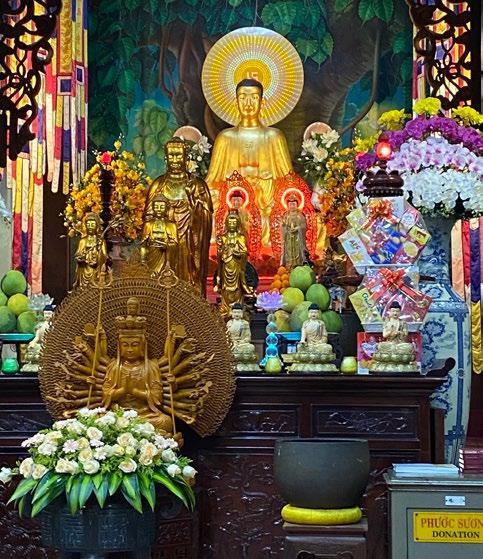

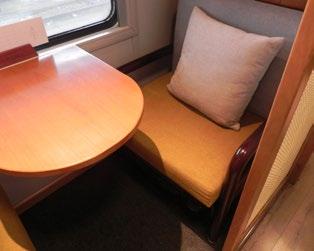
APRIL 2024 31
Quy Nhon Pagoda Buddhist temple
Train: The Vietage by Anantara

“We
are the underdogs of our own story”
Dev Patel on his directorial debut Monkey Man.
 SBY NEERU SALUJA
SBY NEERU SALUJA
ince his Oscar-worthy debut as an actor in Slumdog Millionaire, Dev Patel has always stolen hearts with his vulnerability. This time, he takes the director’s chair with his debut film, Monkey Man. This isn't your typical Hollywood origin story, though. Dev's taken the revered Hindu myth of Hanuman and infused it with gritty action, social commentary, and a whole lot of heart. Join us as we delve into the mind of this fresh-faced director, where we explore the emotional rollercoaster of his SXSW premiere, the challenges of directing himself for the first time, and the powerful message of love and justice.
Congratulations, Dev. What a brilliant film you’ve made. Wow. Thank you. Thank you.
“I was worried, is anyone going to remember who I am? Are they going to show up? (Turned out) we had queues going around three blocks in the street (at the premiere).”
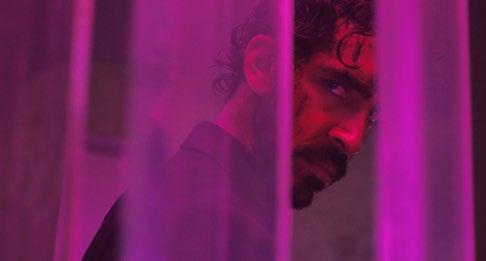
And receiving a standing ovation for the premiere at SXSW! Dev, I've never seen you so emotional. What was going through your mind at that moment?
Oh, man. I mean, I've poured blood, sweat and tears, every part of myself into this. I've turned down jobs that I only dreamt of having as an actor to continue birthing this little gremlin of a movie and to come out of this dark edit hole and go show it to an audience for the first time. We had queues going around three blocks in the street and I was worried, is anyone going to remember who I am? Are they going to show up? And it kind of brought the roof down. I was very emotional. I had to turn away because I was crying. It was a lot. You put everything into it and there's nowhere to hide. You can't blame the director because I'm the director. I can't blame the producer. I can't blame the lead actor, the writer. So, it was very exposing.
You've taken one of the oldest Indian mythologies Hanumanji, and given it a modern spin. Through the process of writing and directing, how did you
32 APRIL 2024 www.indianlink.com.au SCREEN
(This and below) Scenes from Monkey Man
“Hanuman represents strength, courage, nobility, even a lack of confidence at times, but he grows into a hero at the end.”
make sure that it's going to appeal to an international audience?
Being born and raised in London I’ve always had one foot in the UK, one foot in India. One of the most exhilarating and electrifying parts of our mythology was the story of Hanuman to me as a young boy - what he represented, his strength, his courage, his nobility, even his lack of confidence at times, and how he grew into a hero at the end of that epic. I was like, my lead character can draw inspiration from this icon as well. We can start with this underdog and grow him into an avenger of sorts.
I’ve also tried to put as much of our culture in there as I could, from Ustad Zakir Hussain playing the tabla in a huge sequence, the Hijra community, the beautiful costumes, the mythology, even the cool underground Indian rappers - we have it all.
It's all wrapped really well, and beautifully too. Despite the mythology, it is a jaw-dropping action thriller - a fight against oppression. What compelled you to tell this story?
I think sometimes in the revenge kind of genre, you have these senseless movies of just violence upon violence, and there's no real catalyst or anything. I wanted to ground it with some real context, some real pain. I wanted to talk about violence against women, about religion and politics, about the marginalised, about police corruption and brutality. I wanted to talk about the rich and poor, the caste system. All of these things exist in India. They exist everywhere in the world, actually. And so in a way, we are the underdogs of our own story. I wanted to create an anthem for the underdogs, someone that doesn't look like the normal hero with the massive muscles that you know is going to win, but someone that is this skinny man who loses and fails and fails and tries and fails again. It's about his journey, to reach justice.
Talking about pain and violence, I've always seen you as an empathetic and emotive performer. But with Monkey Man, though you're displaying all the emotions, you also turn out to be badass. So, what challenges did you face while directing yourself?
To tap into that more ruthless kind of self, was difficult. It was probably one of the hardest acting challenges for me to date. And my hat off to all those amazing action stars who can pull it off, because it's the moments in between the action, in between the punches, where you have to sell them a moment. You're really going big. At the end of the movie, the prayer is recontextualized and pointed towards a mother. When my character talks about worshiping God, he's talking about worshiping his mother. And it's like, how far would you go to right a wrong done to someone that you love so dearly? That's the core of the movie.
Talking about love, you’ve said that Monkey Man is a love letter to your family. We'd love to hear a bit about that aspect.
(It comes) from my granddad and my father telling me these stories of Hanuman, to me idolizing my mother and seeing the sacrifice she's put into me, pushing me to go into my first martial arts lesson. I went to karate and I wet myself. I was young. I didn't know my right and left. I was a dyslexic kid. I never wanted to do it again, but she knew I loved martial arts, so she took me to many other classes till I found this taekwondo school I liked. That's where I grew confidence, discipline and got a black belt. All of it is in there, so, you know it is a love letter to my parents.
All the best, Dev. You're taking this love letter now to all of your fans out there. Congratulations once again, and thank you so much for taking time out for us today. Sending you lots of love from Australia.
Thank you. Lots of love.
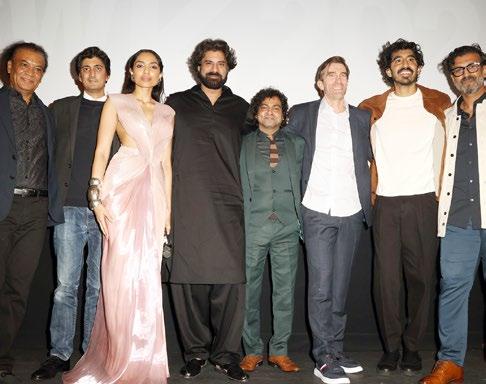


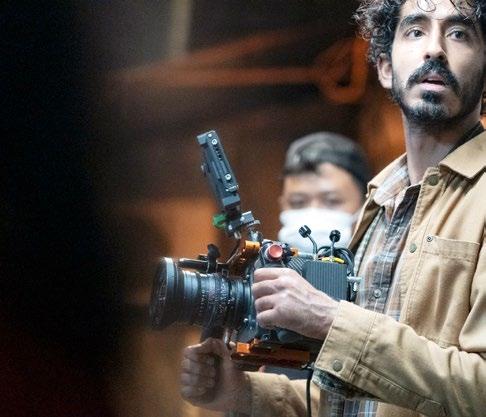
APRIL 2024 33
The cast including Sikander Kher and Shobita Dhulipala Dev at work as Director
cineTALK
A sports drama, action thrillers, a biopic, a teen drama and romcoms: there’s a good variety on NEERU SALUJA’s watchlist this month
MAIDAAN (In cinemas)
This much awaited biological sports drama, finally releasing on Eid weekend, is the true story of India’s greatest football coach, Syed Abdul Rahim. It chronicles Syed’s challenging journey from 1952 to 1962, known as the golden era of Indian football. Ajay Devgn, Priyamani and Gajraj Rao star.
Releasing 10 April
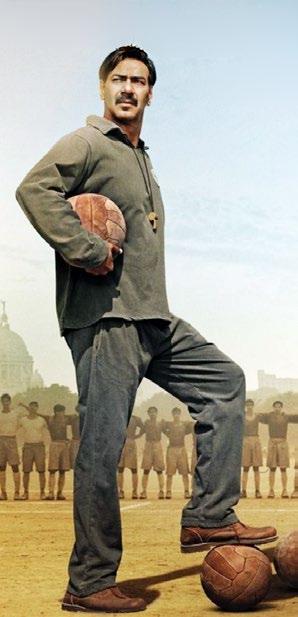

BADE MIYAN CHOTE MIYAN (In cinemas)
If you think your funny bones are going to be tickled in this film, like its 1998 namesake, then you’re mistaken. It’s adrenaline pumping action this time, as dynamic duo Akshay Kumar and Tiger Shroff take on a globe-trotting mission to recover a dangerous weapon. Manushi Chhillar, Alaya F and Sonakshi Sinha also star – although we wish it was the OG girl Raveena against dashing Akshay!
Releasing 10 April
SEEKING GROOM
Match for pretty, single 5’6” /58 MBA lecturer. Groom settled/able to settle in Australia. He should be unmarried, tall, wealthy, professional. Prefer medicos. Genuine calls only +61 0435747736 or write with full bio/ photo to lataprem900@yahoo.com.
Seeking Indian origin, professionally qualified, issueless match (working professional, not self-employed) from Australia, for ’88 born, 5’3” Hindu Punjabi girl (divorced, issueless), working with a government organisation in Sydney. Must have Aus PR, and be a non-smoker and preferably teetotaler. Email biodata with photos, parents contact details to: matrimonial.ml@gmail.com.
MONKEY MAN (In cinemas)
Oscar nominee Dev Patel makes his directorial debut with this jaw dropping action thriller about one man’s quest for vengeance against the corrupt leaders who murdered his mother. Inspired by the legend of Hindu deity Hanuman, Monkey Man stars Dev Patel who makes a living by beaten bloody in an underground fight club, wearing a gorilla mask.
Releasing 5 April
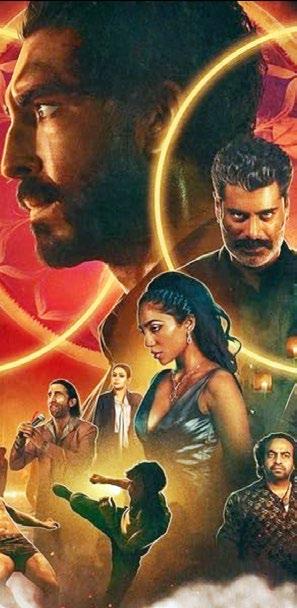
MATRIMONIALS
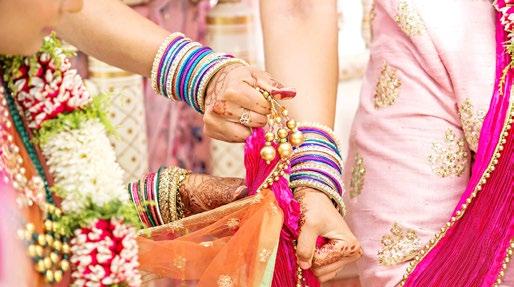
SEEKING BRIDES
Seeking bride of South Indian origin who lives and works in Sydney, Australian citizen or PR, age 25-30, 5'2"+, fair, slim, for my only son, 32, 5’-11”, M.Tech (Sydney), working at I.T MNC. He is an Australian citizen, owns his own home, non-vegetarian and is an animal lover, and would like a partner who is friendly, respects elders, and loves animals. We are a South Indian family, welleducated and well-settled here, and would prefer a match born or brought up in Australia.
Please contact me via WhatsApp: Raja, 0468 412 787.
34 APRIL 2024 www.indianlink.com.au ENTERTAINMENT
decide!
Worth waiting for? You

AMAR SINGH CHAMKILA (Netflix)
The untold story of Punjabi singer Amar Singh Chamkila will come alive in this autobiographical, helmed by Imtiaz Ali. Chamkila, who once ruled the hearts of Punjabis worldwide, was shot dead in 1988,as he stepped out on stage. Singer-actors Diljit Dosanjh and Parineeti Chopra are the perfect choice to play the leadshere.
Releasing 12 April
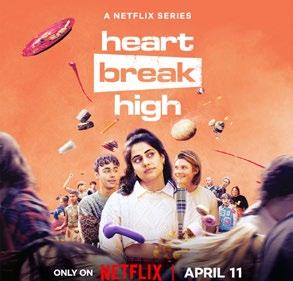
HEARTBREAK HIGH SEASON 2 (Netlfix)
Logie nominee Ayesha Madon makes a comeback with Season 2 in the reboot of the iconic Australian comedy-drama. The second season follows the students and teachers of Hartley High as they navigate sex, love, identity, racial tensions, and general teen angst.
Releasing 11 April
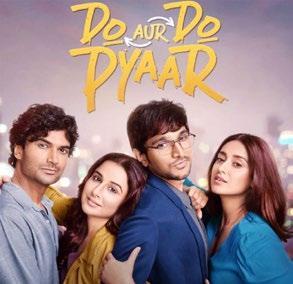
DO AUR DO PYAAR (In cinemas)
Another directorial debut by Shirsha Guha Thakurta, about a couple on the brink of a breakup that are cheating on each other with two sexy outsiders. Starring Vidya Balan, Pratik Gandhi, Ileana D’Cruz, and Sendhil Ramamurthy (of Never Have I Ever fame), this contemporary romcom looks interesting with its fresh pairing.
Releasing 19 April
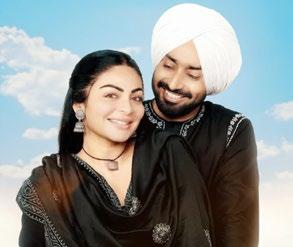
SHAYAR (In cinemas)
A love story starring Punjabi stalwarts Neeru Bajwa and Satinder Sartaaj, Shayar is a tale of timeless love between the protagonists Satta and Seero.
Releasing 19 April
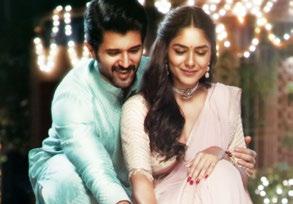
FAMILY STAR (In cinemas)
This Telugu romantic family drama film is directed by Parasuram and features Vijay Deverakonda, Mrunal Thakur, Ajay Ghosh and Divyansha Kaushik as lead characters.
Releasing 5 April

MR. & MRS. MAHI (In cinemas)
Janhvi Kapoor and Rajkummar Rao who were last seen together in horror comedy Roohi are back with a sports drama. Sharan Sharma who earlier directed Kapoor in Gunjan Saxena, directs again. Releasing 19 April

HOW TO DATE BILLY WALSH (Amazon Prime)
Bridgerton-fame Indian-origin actress Charithra Chandran works with director Alex Pillai on this romcom. This is the story of Amelia and Archie: Archie hides his affection for Ameila until Amelia falls for the new transfer student, Billy Walsh. You’ll also see Big Bang Theory star Kunal Nayyar playing a part in this film.
Releasing 5 April

LOVE SEX AUR DHOKHA 2 (In cinemas)
After a long gap of fourteen years, filmmaker Dibaker Banerjee is back with a sequel of 2010 cult classic Love Sex aur Dhokha, delving into another captivating theme: love in the era of the internet. The film stars Nimrit Ahluwalia, Urfi Javed, and has cameos by Mouni Roy and Tusshar Kapoor.
Releasing 19 April

ARANMANAI 4 (In cinemas)
Tamannah Bhatia and Suder C. headline the fourth instalment of the Tamil horror comedy film series Aranmanai. The film also stars Raashii Khanna, Santhosh Prathap, Ramachandra Raju, Kovai Sarala, Yogi Babu, KS Ravikumar, Jayaprakash, VTV
Ganesh, Delhi Ganesh, Rajendran and Singampuli.
Releasing 11 April
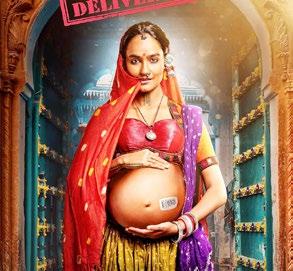
DUKAAN (In cinemas)
Screenwriter and lyricist duo Siddharth and Garima, who are associated with hits such as Animal, Bajirao Mastani and Toilet Ek Prem Katha, are all set for their directorial debut with Dukaan. After Kriti Sanon starrer Mimi (2021), Dukaan brings us yet another story about surrogate mothers and their struggles. The film stars Monika Panwar, Sikander Kher, Soham Majumdar, and Monali Thakur.
Releasing 5 April
APRIL 2024 35
Loving right now
A list of Indian Link’s current favourites
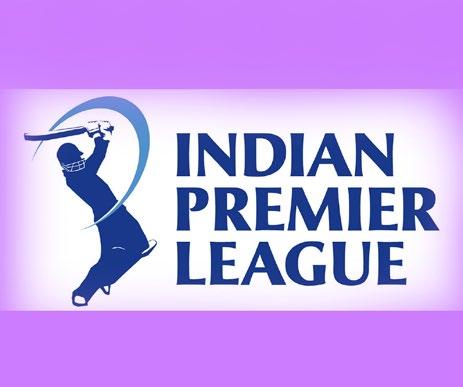
WATCH
Only four games in, this season’s IPL has already proved to be one of the best we have seen. As SRK’s Kolkata Knight Riders fly high, big guns Mumbai Indians, Delhi Capitals, and Virat Kohli’s RCB sit at the bottom of the table. With Aussie boys Pat Cummins, David Warner, and many more doing the green and gold proud, the question remains as to whether Virat Kohli will get his hands on his first IPL trophy. Or whether MSD will claim another IPL trophy in what could be his last season.

LISTEN
In The India Dialogue podcast, Guru Prakash Paswan, Manuraj Sundaram, Mitali Mukherjee and Ruchir Punjabi engage in weekly discussions on India's economics, politics, social issues and current affairs. Their collective expertise and differing viewpoints contribute to insightful discussions - informative and thought-provoking for those seeking nuanced understanding of India's dynamics, especially as general elections approach. The chatter delves into India's core challenges, offering diverse perspectives and friendly disagreements. The objective is to deepen understanding and stimulate constructive discourse on contemporary India.

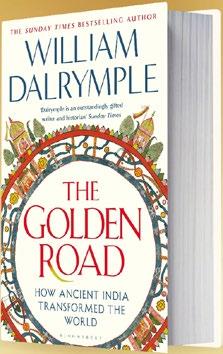
READ
Did you know that India played a central role in shaping the ancient world? From 250 BC to 1200 AD, India was a bustling hub of ideas and culture, exporting its diverse civilisation across vast regions. Imagine a 'Golden Road' stretching from the Red Sea to the Pacific, connecting people and ideas through Indian art, religions, technology, and more. William Dalrymple's new book The Golden Road shines a light on India's often overlooked influence, from its great philosophical insights to its mathematical innovations. It's a captivating journey through history, revealing India's status as an intellectual powerhouse of ancient Asia.

EAT
'Avo' padharo mahre des! The Indian consumption of Aussie avocados has seen a massive uptick. From 397 metric tonnes in 2019-20 to 2210 metric tonnes in 2022-23, it’s a whopping 450% growth from across the globe, according to the World Avocado Organisation. Prices could range from around Rs. 150 - Rs. 200 each, to even Rs 550. Not surprisingly, local production has also increased to meet demand, with farms in the south and northeast of India. Check out the Indian-style recipes on the ‘gram - avocado bhel, avacado chaat, Avo Lassi, even avocado parathas.
36 APRIL 2024 www.indianlink.com.au
INDIAN LINK LOVES
TORSHA SEN | RENESH KRISHNAN

APRIL 2024 BY MINAL KHONA
Minal Khona has been reading tarot cards for the last two decades. She uses her intuition and connect with the cards mostly to help people.
19
A separation due to a disagreement in a relationship is temporary, no matter how bad it looks right now. At work, new ideas will be met with success and you will make more money through them or business deals. Men should have their prostate gland checked. Spiritual guidance will help you tide over this difficult month. Use these setbacks to grow spiritually and to remove all fears. Things will resolve themselves in time. Everything happening now is helping you evolve.
Abundance in all forms is yours this month. Emotions will also be running high so stay calm. An unexpected meeting will bring good luck. Singles look for something better this time round. Highs and lows at work are temporary. Shift your energy to doing what you love. What you desire will come to you but not in the way you wanted. Trust the universe and that it is working for your larger good. Avoid making impulsive decisions, or judgements.
TAROT
A month of hope and new possibilities on the horizon. Those of you who are dating might hold back even if your partner is keen to take things forward. Take that leap of faith if there are no red flags. Some of you may make an impulsive decision. A wish will be granted even before you express it. A decision regarding a long trip will need to be made. You have the confidence that no matter what comes, you will be alright.
Singles could be dating but there will be no real bonding. Those in a relationship, could see it going downhill due to negative emotions. You might even end it. An experience could lead to a change in perspective. Don’t ignore any issues with your eyes – it could be an infection. Expenses are high this month. A long-awaited financial agreement could be in the offing. Establish a spiritual practice for peace of mind. Breaking existing patterns may help solve your problems.
Singles could meet someone interesting through work or at a restaurant. Someone could offer you a new work opportunity or a gift of money. An overall abundant month as you focus on progress in your career. If looking for a new job, stick with the remuneration you expect – you will get it. A friend or relative could have a problem with substance abuse. Every situation this month can be dealt with practically, with forethought. Promote your business for best results.
You could encounter unexpected problems, arguments and setbacks that create a depressing atmosphere. Singles will not compromise for the sake of being in a relationship. Conflicts at the workplace are indicated; stay calm as much as possible. A recurring illness could flare up again. Though your finances are alright, you could still worry about them. Think positive, work on your affirmations and even in setbacks, don’t get disheartened. The current negative situation will soon end. Trust no one but yourself.
You can expect a long-term existing condition to change. Some form of healing is a must for things to improve. People around you could motivate you towards a relationship, if single. Expect several short trips. The atmosphere at work is supportive and conducive to growth. Your money situation is also positive. An opportunity could lead to new avenues of work or meeting new people. Hold on to the feelgood mindset for more positive outcomes. Trust the universe and your intuition.
An ex could make a comeback but sparks won’t fly. You might want to stay in loner mode this month, or travel inwards through meditation. Your work experience will lead to more opportunities and fame and fortune. If in a relationship, watch for red flags that signal abuse. New business or positive outcomes to dilemmas are foretold. You may not have all the answers but they will come to you in time. Watch out for a poverty of spirit attitude and let it go.
A month that calls for balance on all fronts, as expenses equal income and emotions run riot. Stick with the rational mind as plans could go awry easily. Stress can cause health problems like backaches and headaches. Any communication blocks in a relationship will soon be dissipated. A mentor or someone new you meet will give your current situation a positive boost. Avoid multi-tasking and find time to recharge. Stay calm no matter what the challenges are in front of you.
You draw the card for Aries making you more action oriented in April. Expect lot of activity and leadership roles. Don’t shut down emotions if you have problems; it will worsen matters. Paperwork keeps you busy and you may take a decision or sign a contract – a lifechanging event. You might find yourself in a leadership role in any crisis –at work or at home. New ideas and projects lead to success. A mentor or a new love interest is also indicated.
A search for meaning and purpose due to events in the recent past keep you busy. You can expect lucky breaks in money via a lottery etc. If concerned about the sale of a property, it will get sold. A health issue could reoccur due to anxiety. You will no longer spend your energy on unproductive issues. A new skill will be brought into play in your line of work to your advantage. Long term professional goals will see progress.
Reminiscing about childhood or going down memory lane, and listening to your own intuition, work for you. If frequently depressed or irritable, perhaps there’s a need for inner child healing. A transformative experience opens you to a new relationship. Seniors will be supportive at work; expect a job offer or promotion. You can expect financial gains beyond your expectations. Watch your ideas and the right one will stay. Look for the glimmers in your life and your day to remain happy.
APRIL 2024 37
FORETELL
LEO JULY 21
AUG
SAGITTARIUS NOV 22 - DEC 21 CAPRICORN DEC 22 - JAN 19 AQUARIUS JAN 20 - FEB 18 PISCES FEB 19 - MARCH 20 VIRGO AUG 23 - SEP 22 LIBRA SEP 23 - OCT 22 SCORPIO OCT 23 - NOV 21 TAURUS APRIL 20
MAY
GEMINI MAY 21
JUNE
CANCER JUNE 21
JULY
ARIES MARCH 21 - APRIL
-
22
-
20
-
20
-
20
Potluck party
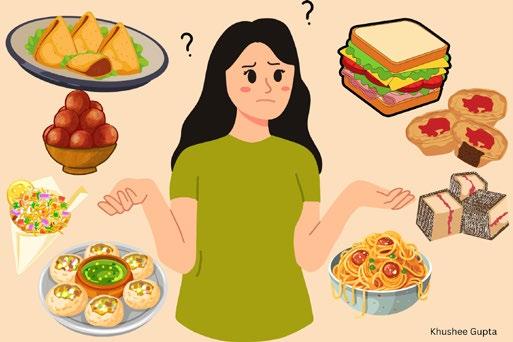
DEAR AUNTYJI
I am in dire need of counselling regarding a potluck lunch with the other Indian ladies in my building. I have heard recently from my son that they are planning to make all sorts of Western food. They are all very modern and allow their sons to play AFL, and their daughters too! Oh my, Auntyji, if you haven't seen those girls rolling in the mud. Anyway, I wanted to make daal to bring
to the potluck but it seems that they will all bring pasta salads and sandwiches, and worst of all, mince pies. I don't want my children to become so Westernised and think this food is better than good old roti and sabzi. What do I do Auntyji? These ladies all have jobs too, and I don't want my daughter to think that those kinds of things are important. Please advise what to do?
Do you have a question for Auntyji? Email it to info@indianlink.com.au

AUNTYJI SAYS
Oh my dear Chinmayi laddoo - how smart you are to write to me. I can solve your dilemma for sure, but you will have to listen to me with the darwaza of your dimaag fully open. To suno. Every day you cook shook for your family, hai na, and I suspect you cook them healthy wholesome desi food like roti sabzi. This is very good - because our desi food is very healthy.
Lekin, ek din ka potluck khaana is not going to make kamzor petals. Ek roz ki to baat hai nah, and you are living in this country and you want your kids to feel like you are open-minded. So, make some samosas and call them pasties. Limit the amount of curry powder and a samosa can easily masquerade as a pastie. It’s a once-off thing and does not mean that your kids are now going to forget all their maan maryada. You have to have a little bit of give and take. As for the other women having jobs - well, good for them. It’s not for you to judge them. And as for girls playing AFL - well, sport is good for people. Tell me this, meri gulabo, when you came to this country, what did you think was going to happen? AFL, potluck, working mothers are not evil. Backward thinking is.
ASK AUNTYJI





38 APRIL 2024 www.indianlink.com.au BACKCHAT








2 - 4 may 2024
strathfield festival

strathfield square cultural dances live music local tastes

strathfieldevents.nsw.gov.au



APRIL 2024 39
@StrathfieldCouncil @StrathfieldCouncil @StrathfieldMC StrathfieldTV

40 APRIL 2024 www.indianlink.com.au APRIL 2024 SYDNEY EDITION






 TBY PAWAN LUTHRA
TBY PAWAN LUTHRA



























 BY KHUSHAAL VYAS
BY KHUSHAAL VYAS



































 WBY MATANA PACHUAU
WBY MATANA PACHUAU







 BY SYDNEY SRINIVAS
BY SYDNEY SRINIVAS

















 TBY RITAM MITRA
TBY RITAM MITRA

 ABY RISHIV RATHORE
ABY RISHIV RATHORE




 HBY MAMTA SHARMA
HBY MAMTA SHARMA






 WBY Thevakie Karunagaran
WBY Thevakie Karunagaran







 ABY DHANYA SAMUEL
ABY DHANYA SAMUEL




 TBY SANDIP HOR
TBY SANDIP HOR









 SBY NEERU SALUJA
SBY NEERU SALUJA













































